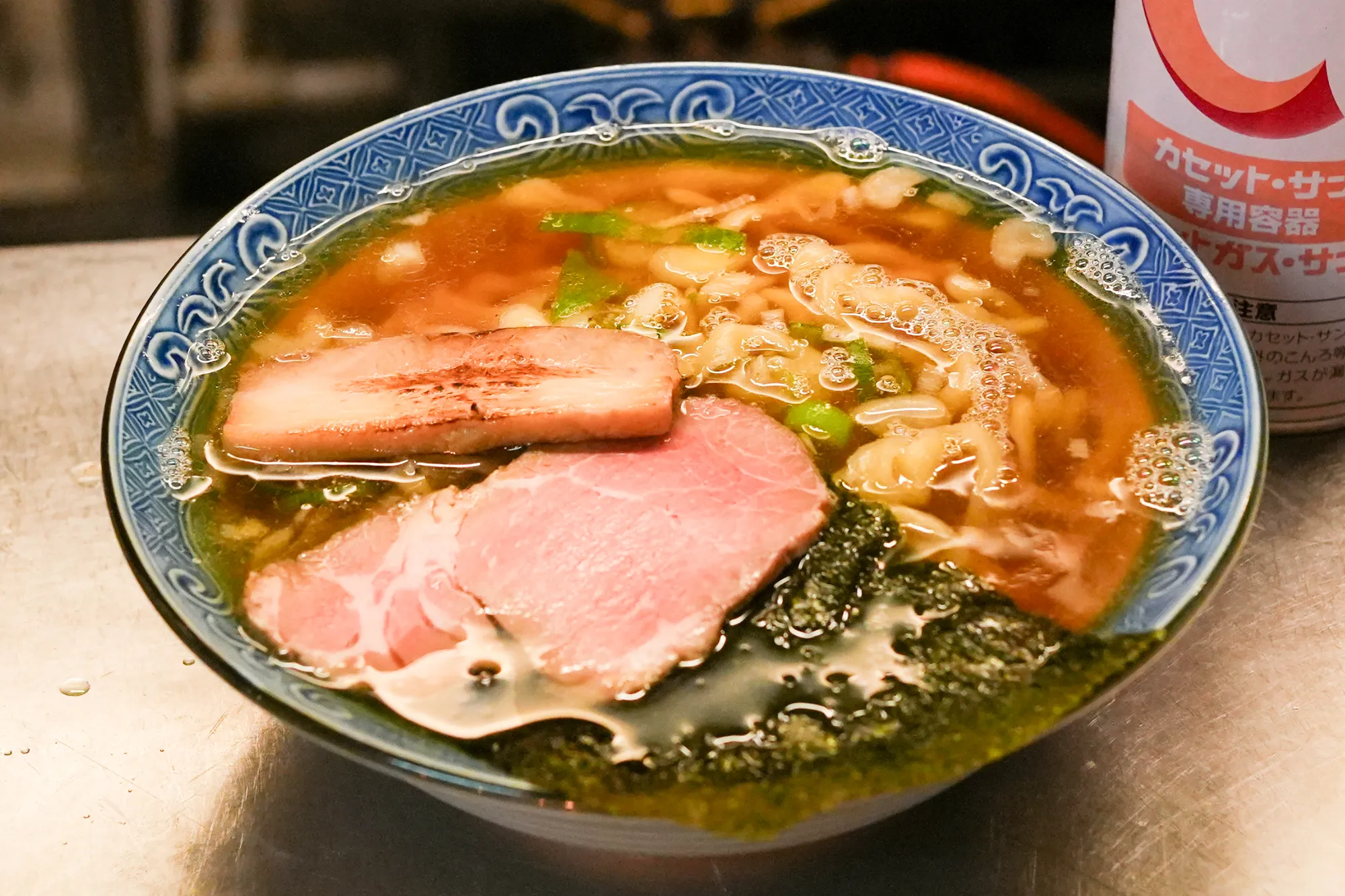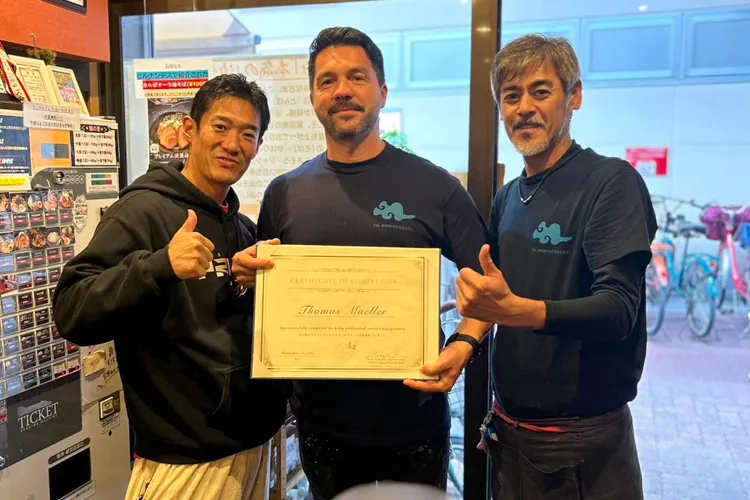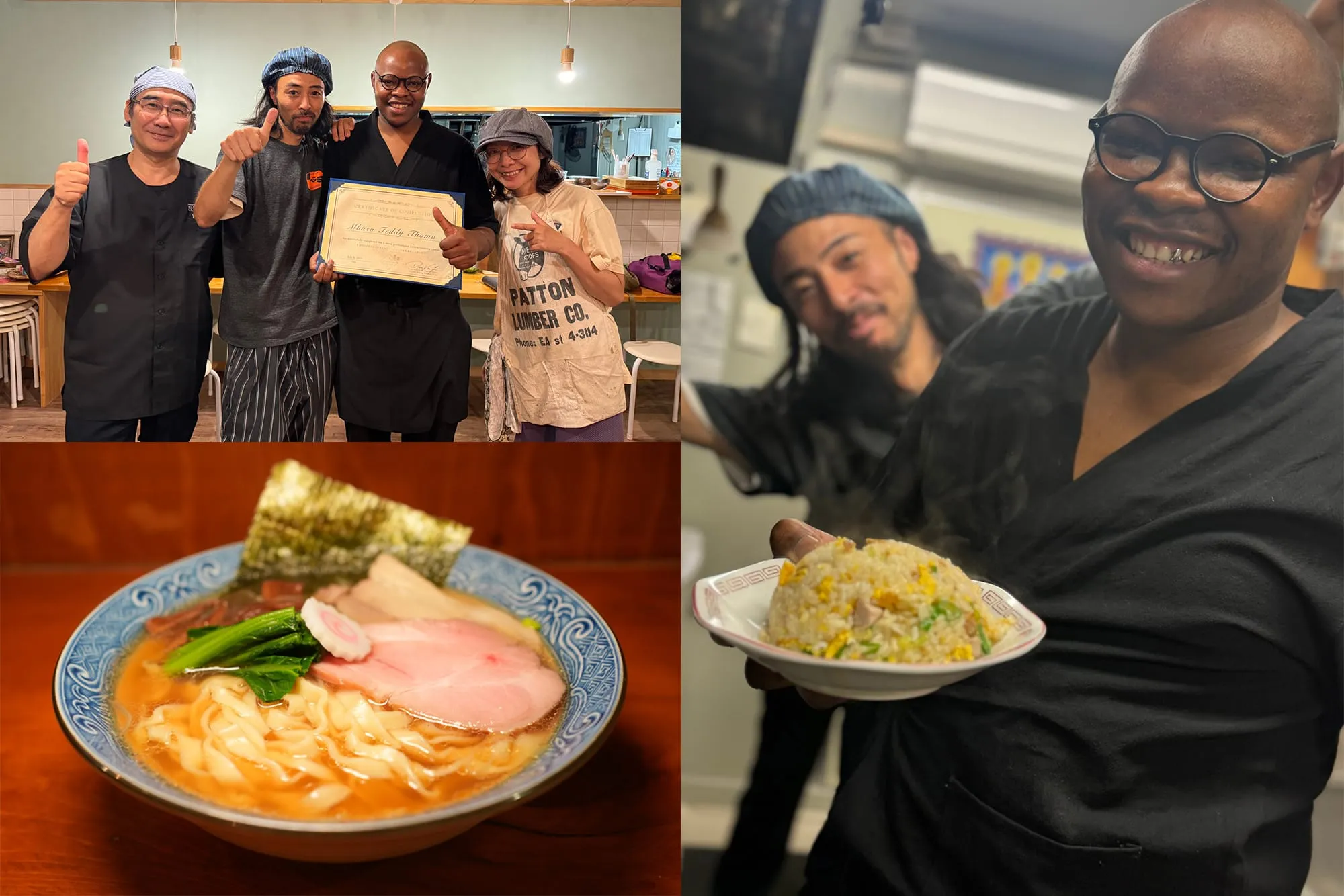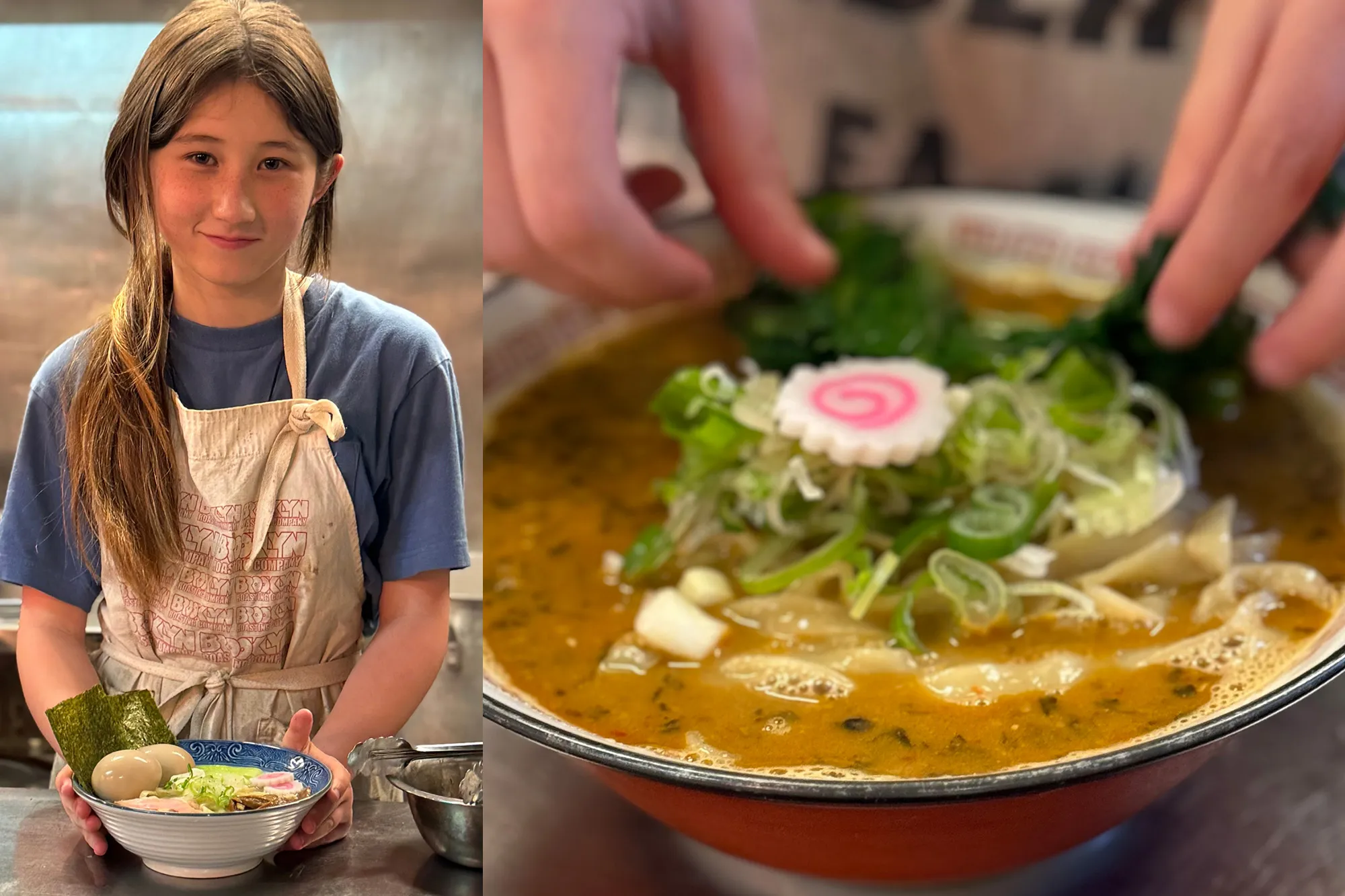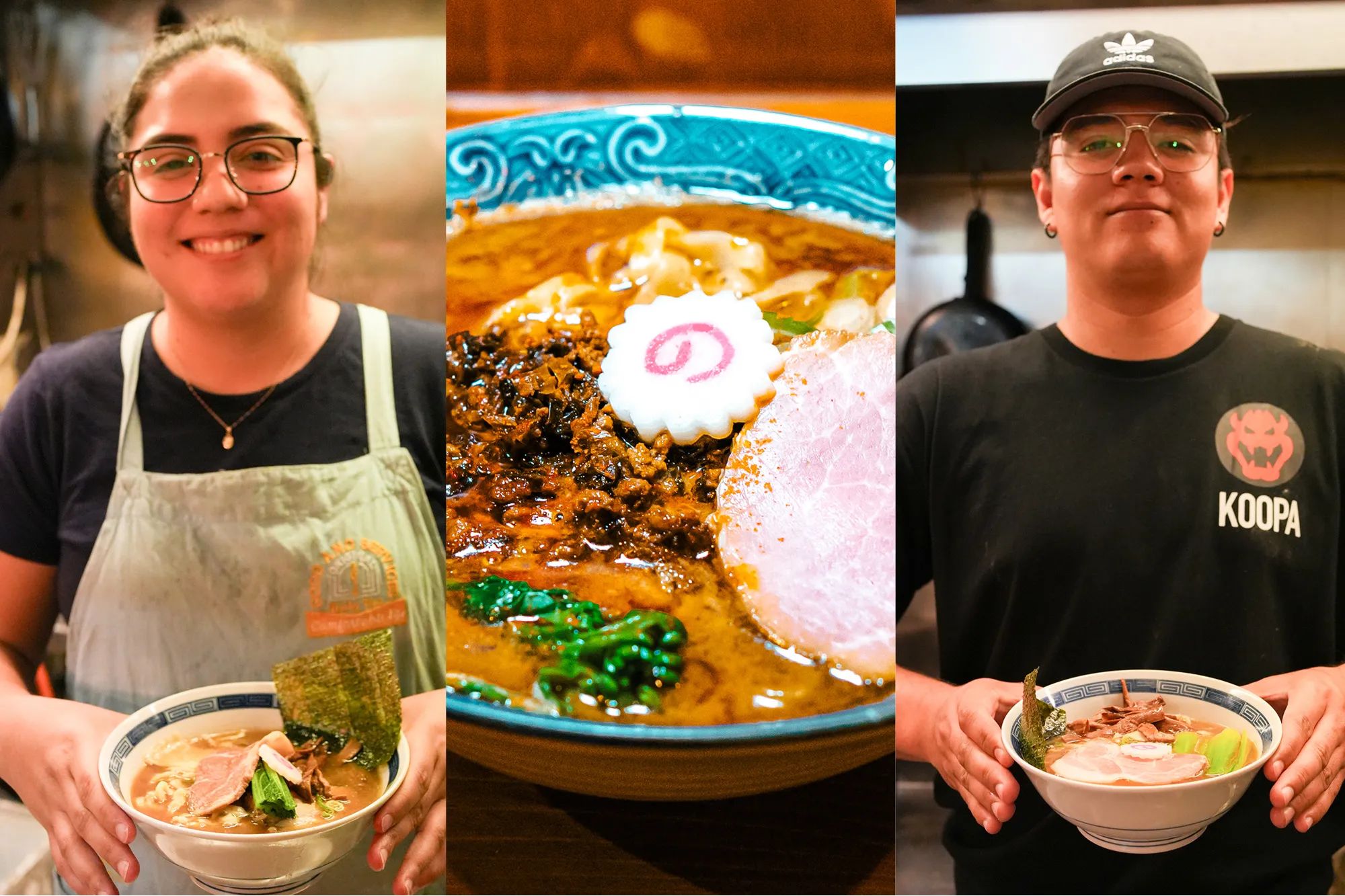Lesson Report: Three-Week Course(Part 2: 1-Week Ramen Course)
May 12, 2024
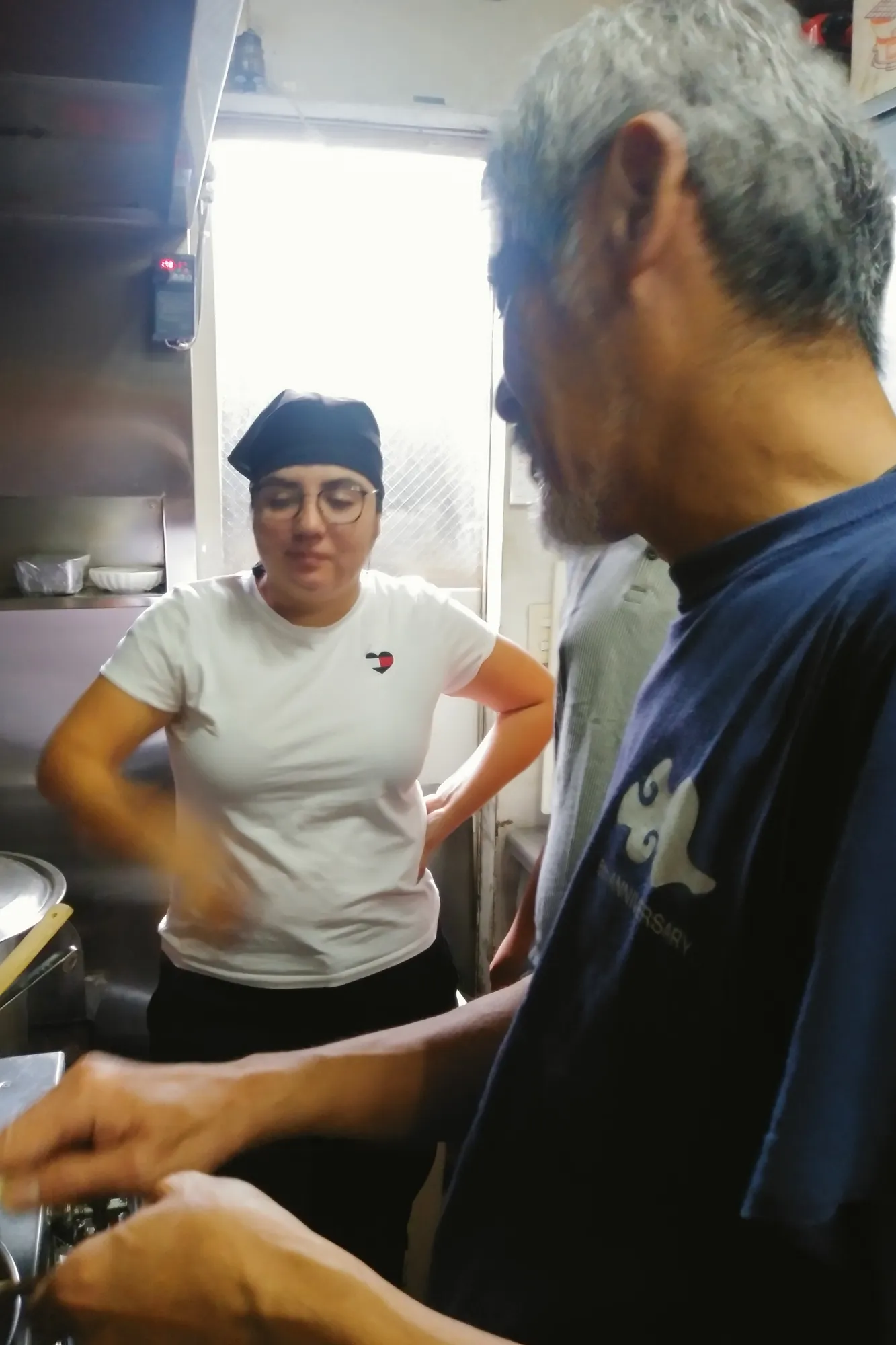
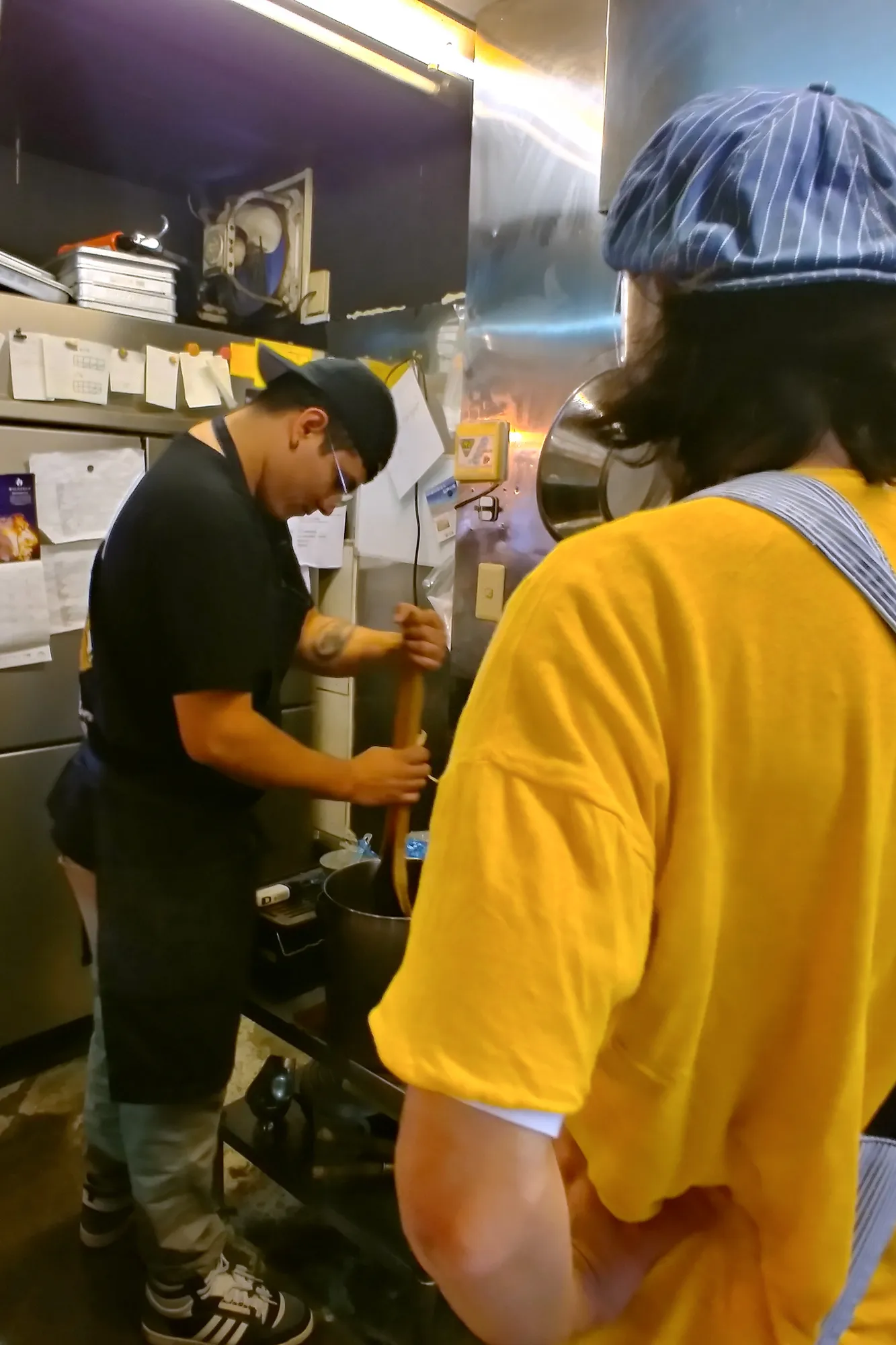
This article highlights the 1-Week Ramen Course attended by Sam and Miguel. The lessons are conducted at two different popular ramen restaurants partnered with our school: Tombo and Kouraku. While Sam has cooked ramen before, they both anticipate learning the traditional methods of ramen making in Japan during the 1-week course.
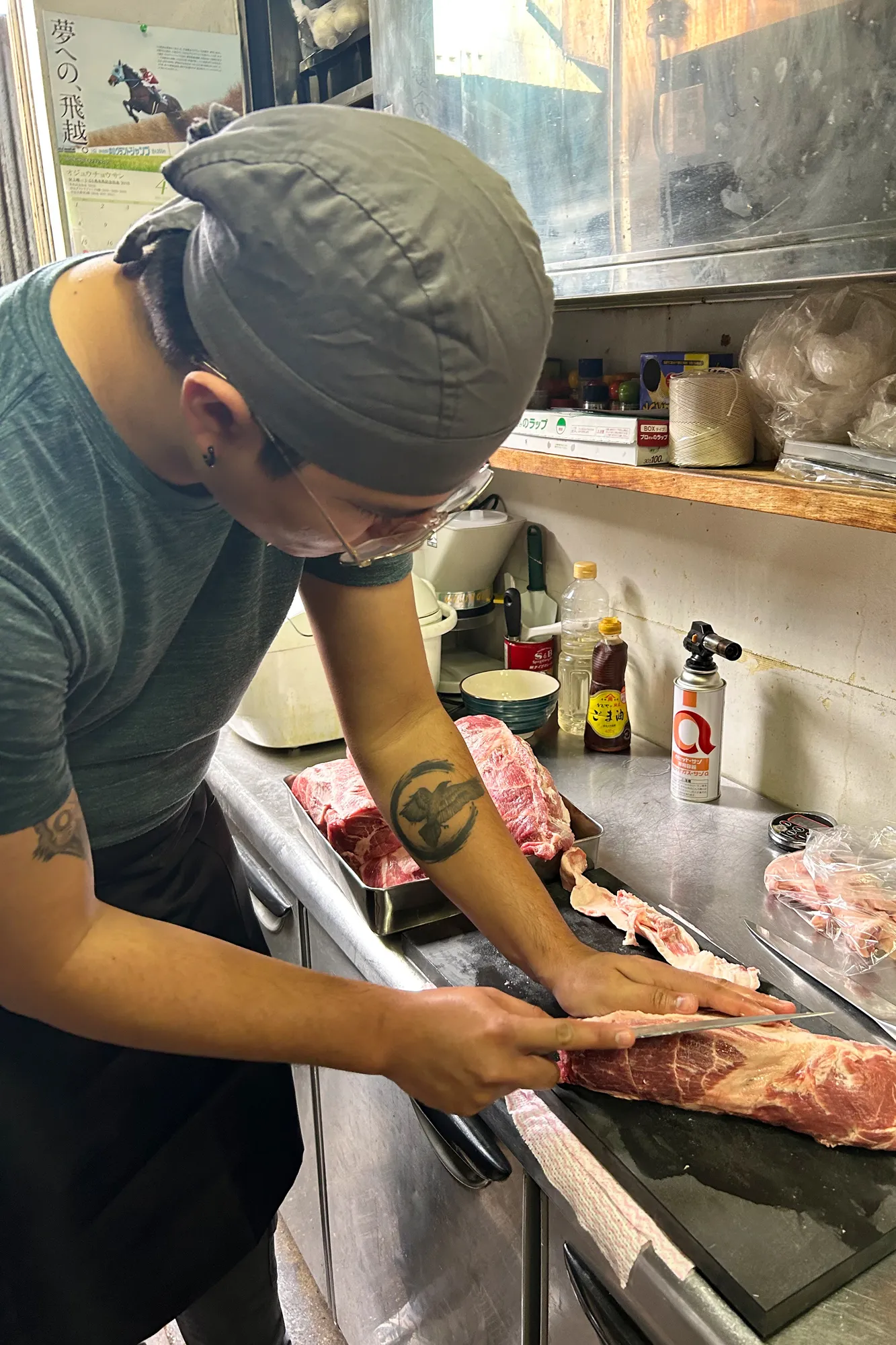
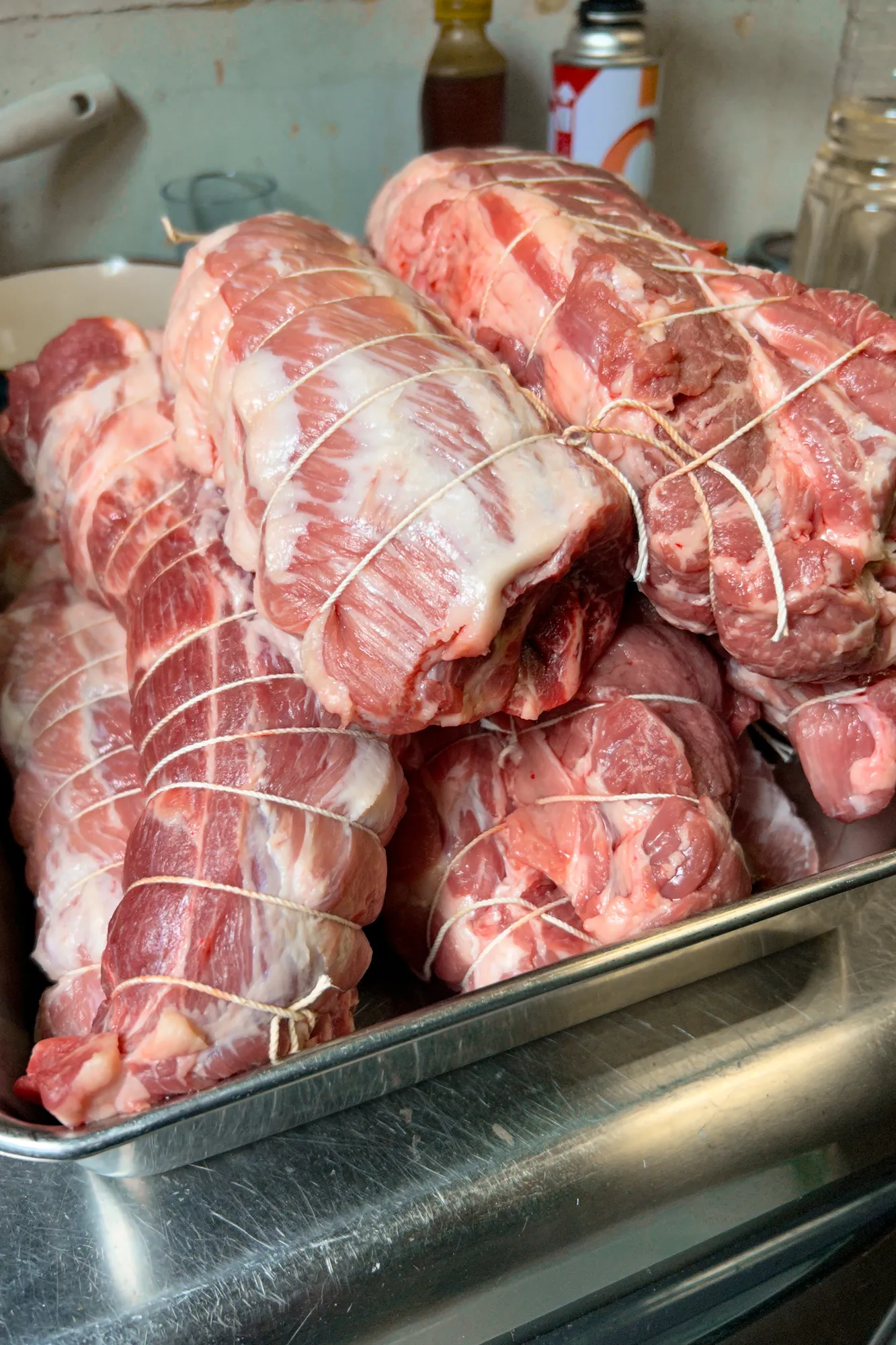
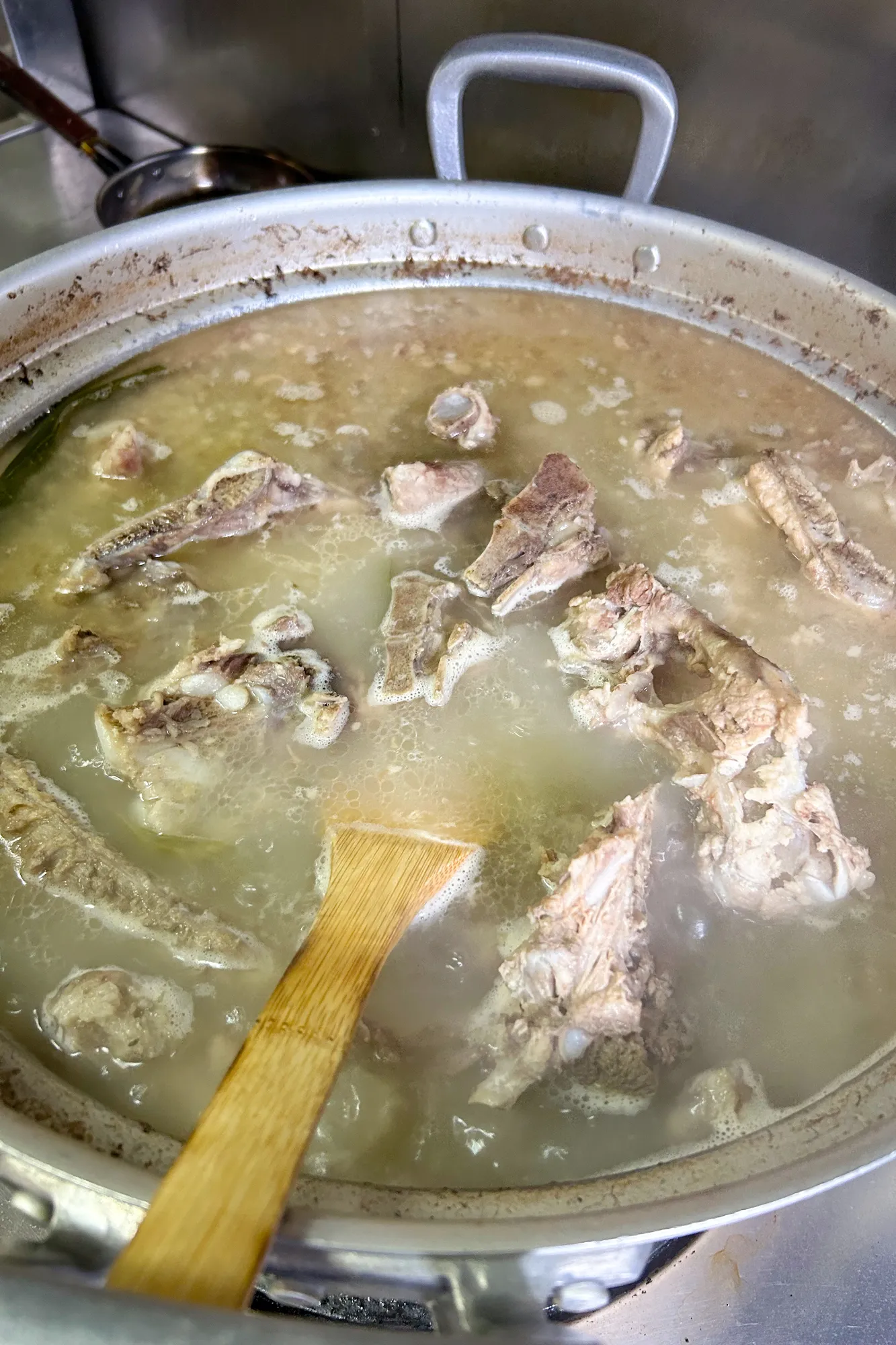
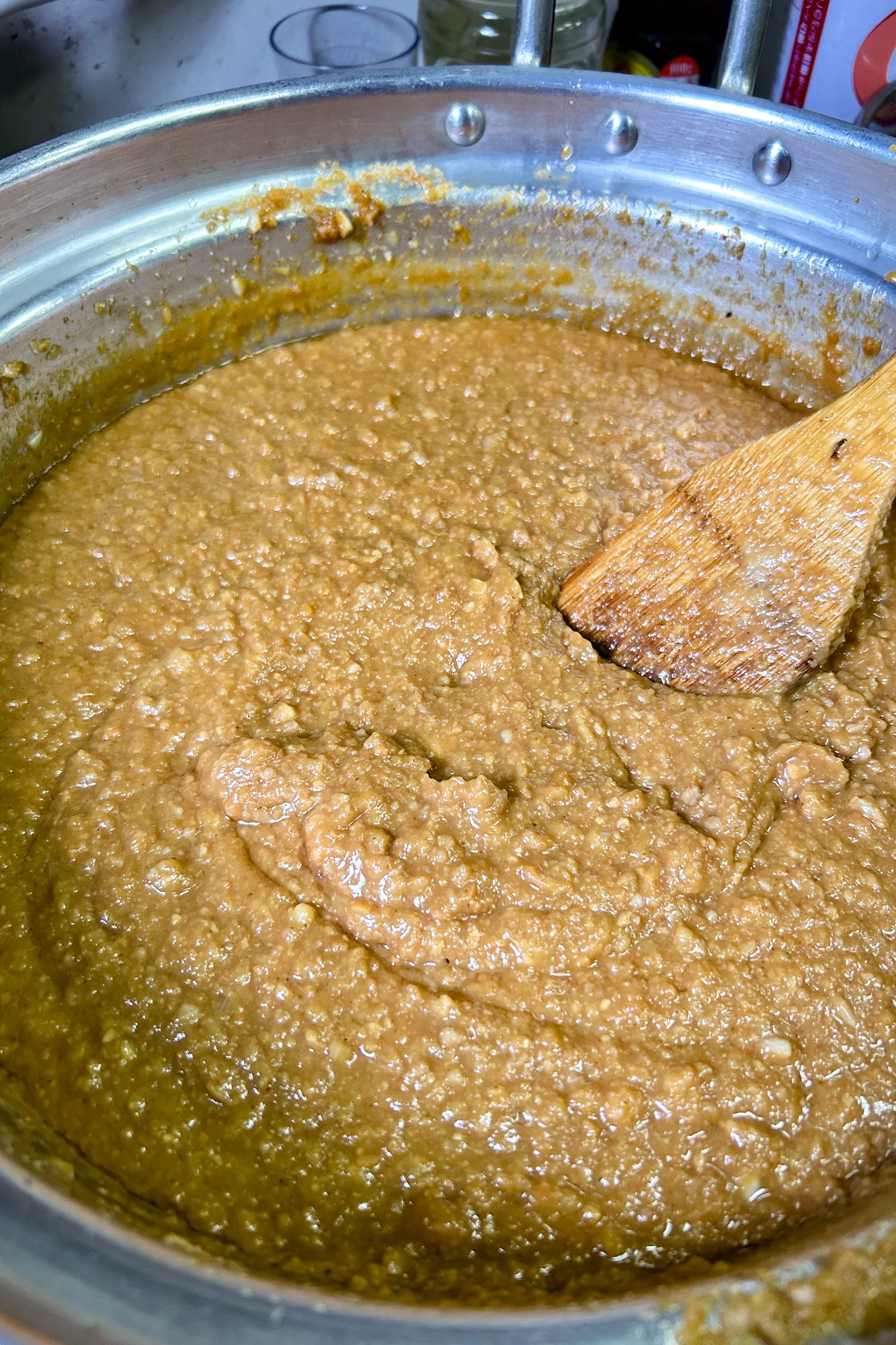
[ Two-day session at Tombo ]
The goal of the two-day session at Tombo is to learn the entire process of making ‘Gyokai Tonkotsu Miso Ramen’ (miso ramen with a blend of two broths: one made from fish and the other from pork bones) and offer it to real customers as the special ramen of the day.
On the first day, they focus on preparing a miso-flavored sauce, a pork bone broth, a fish broth, and rare chashu. Obtaining broth from pork bones involves a lot of physical labor and over 8 hours of cooking. Additionally, the miso-flavored sauce, fish broth, and rare chashu need to be left to marinate overnight. What a lengthy process to craft one bowl of ramen!

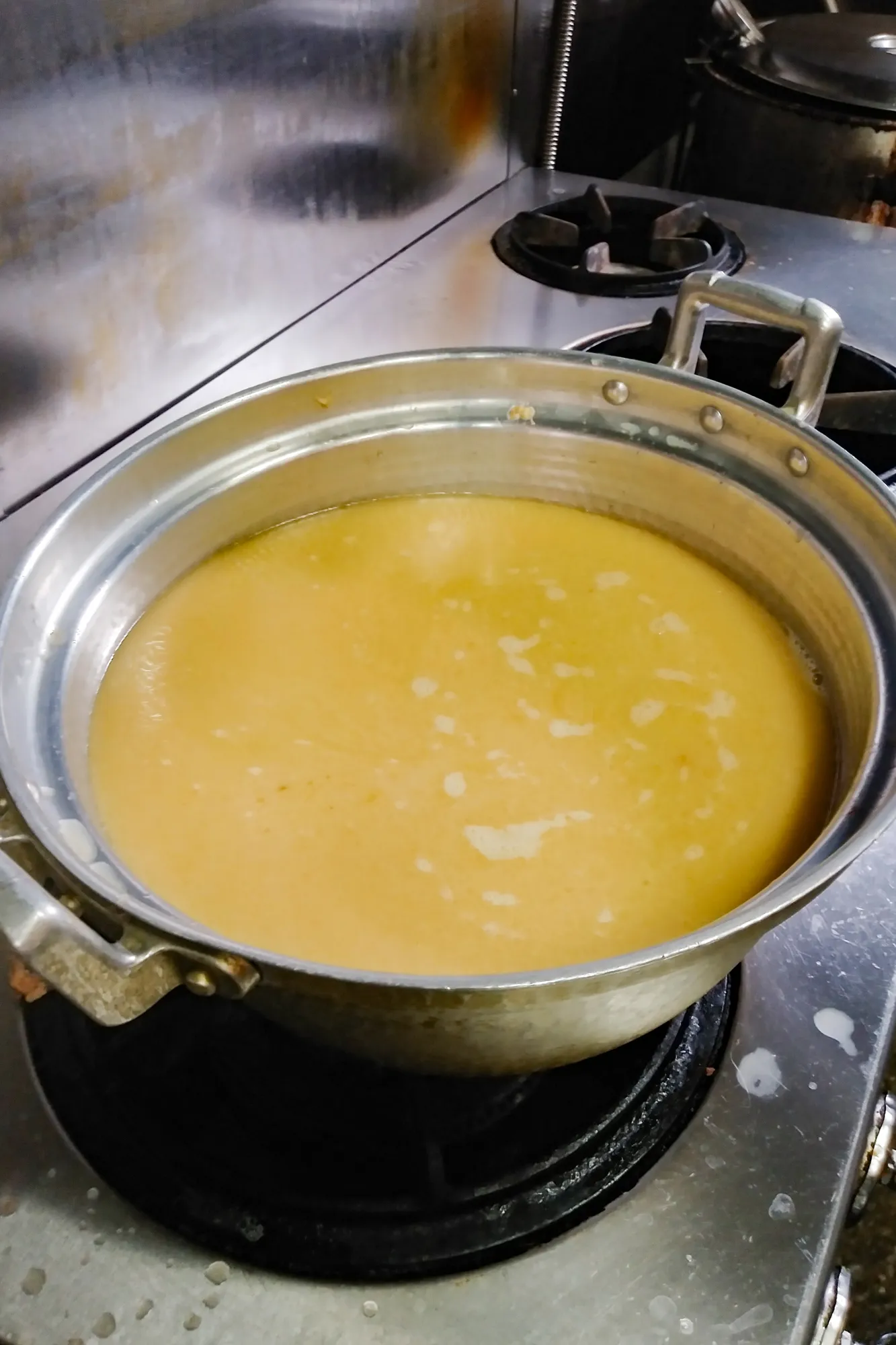
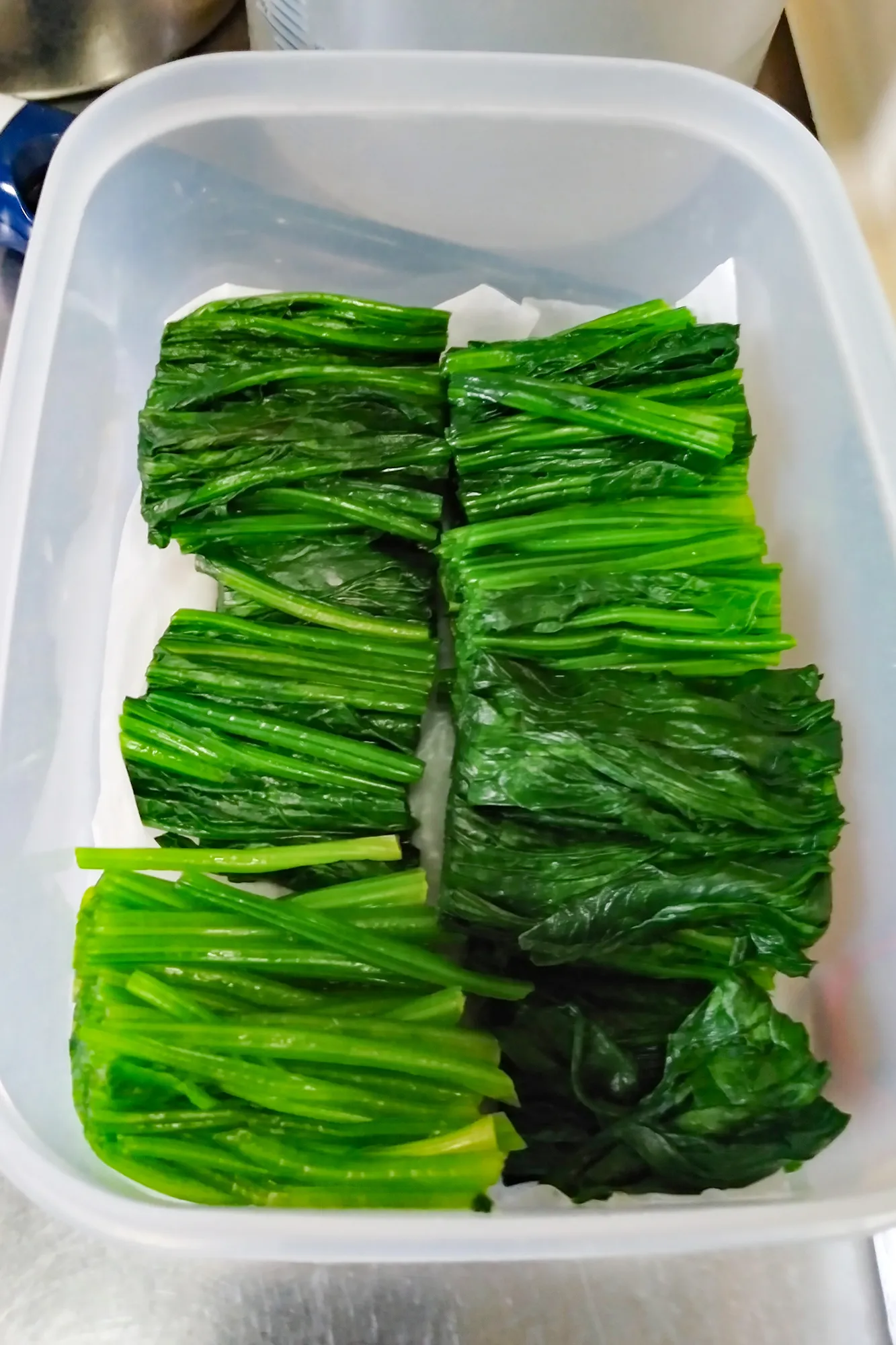
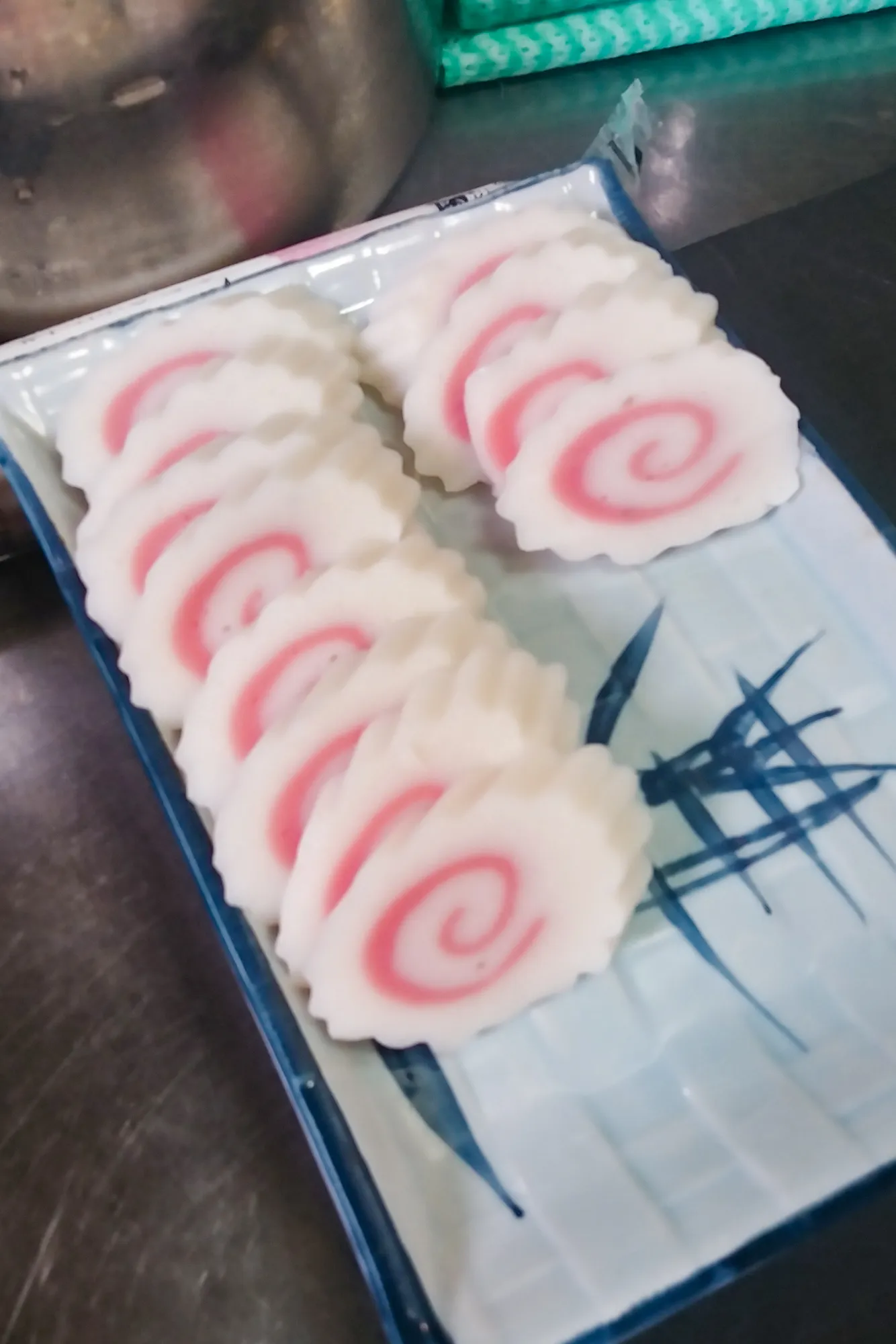
On the second day, Sam and Miguel begin preparing the ‘Gyokai Tonkotsu Miso Ramen,’ the special ramen of the day. They strain the pork bone broth and the fish broth through a sieve, blend these two broths, and prepare toppings for the ramen, including spinach, ‘naruto’ (fish cake with a pink spiral pattern), and seaweed sheets under the guidance of the instructor.
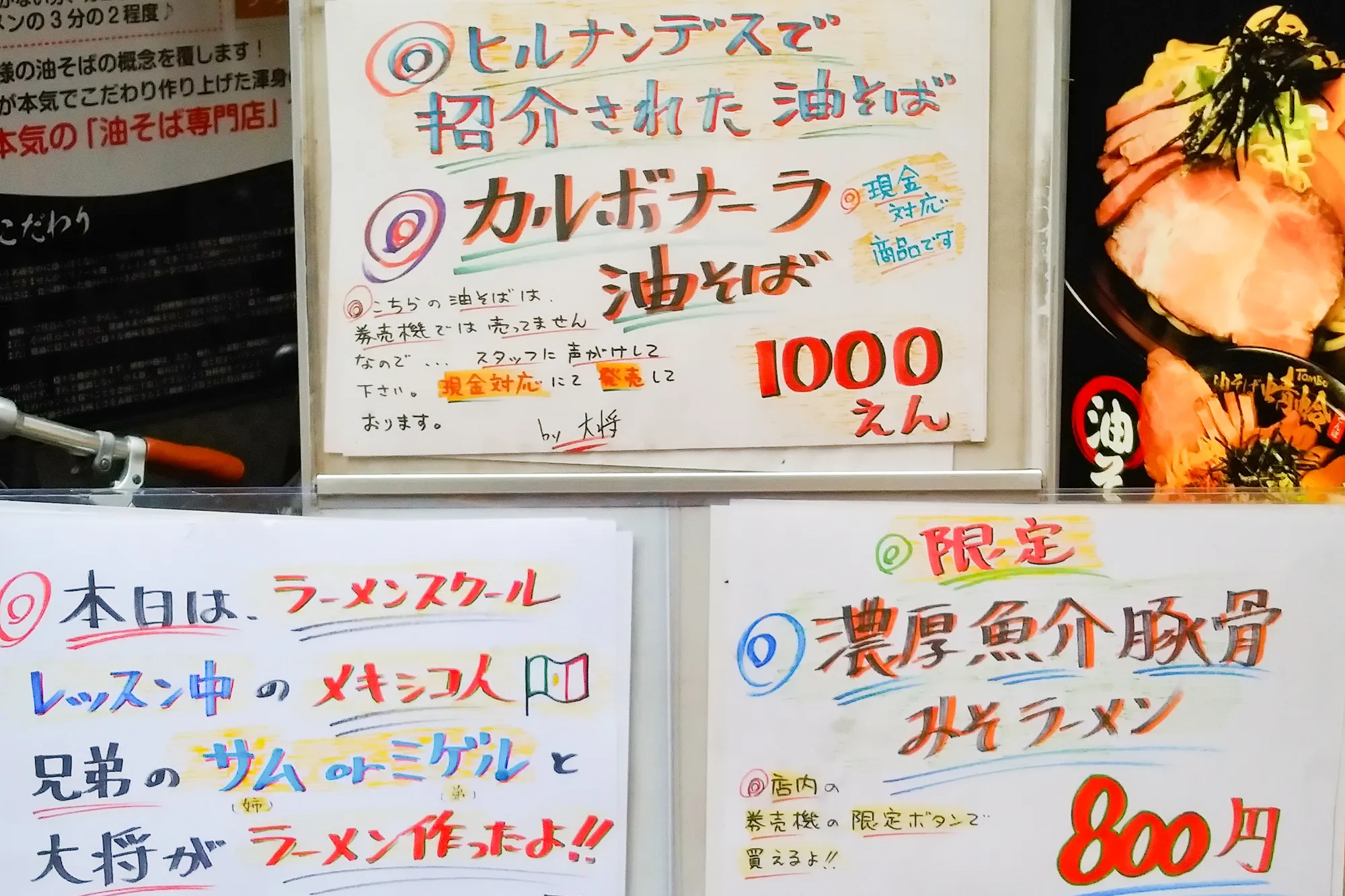
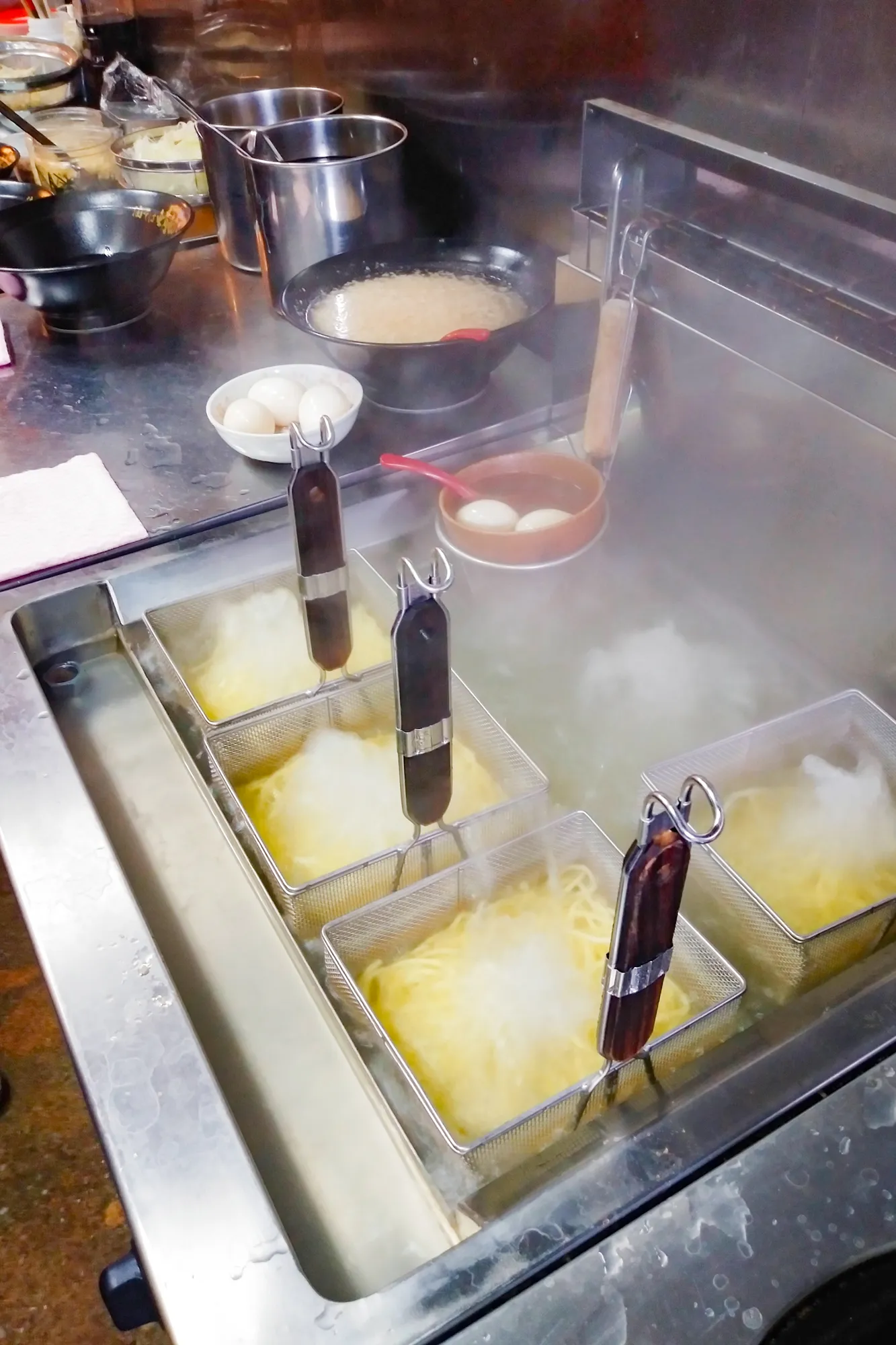
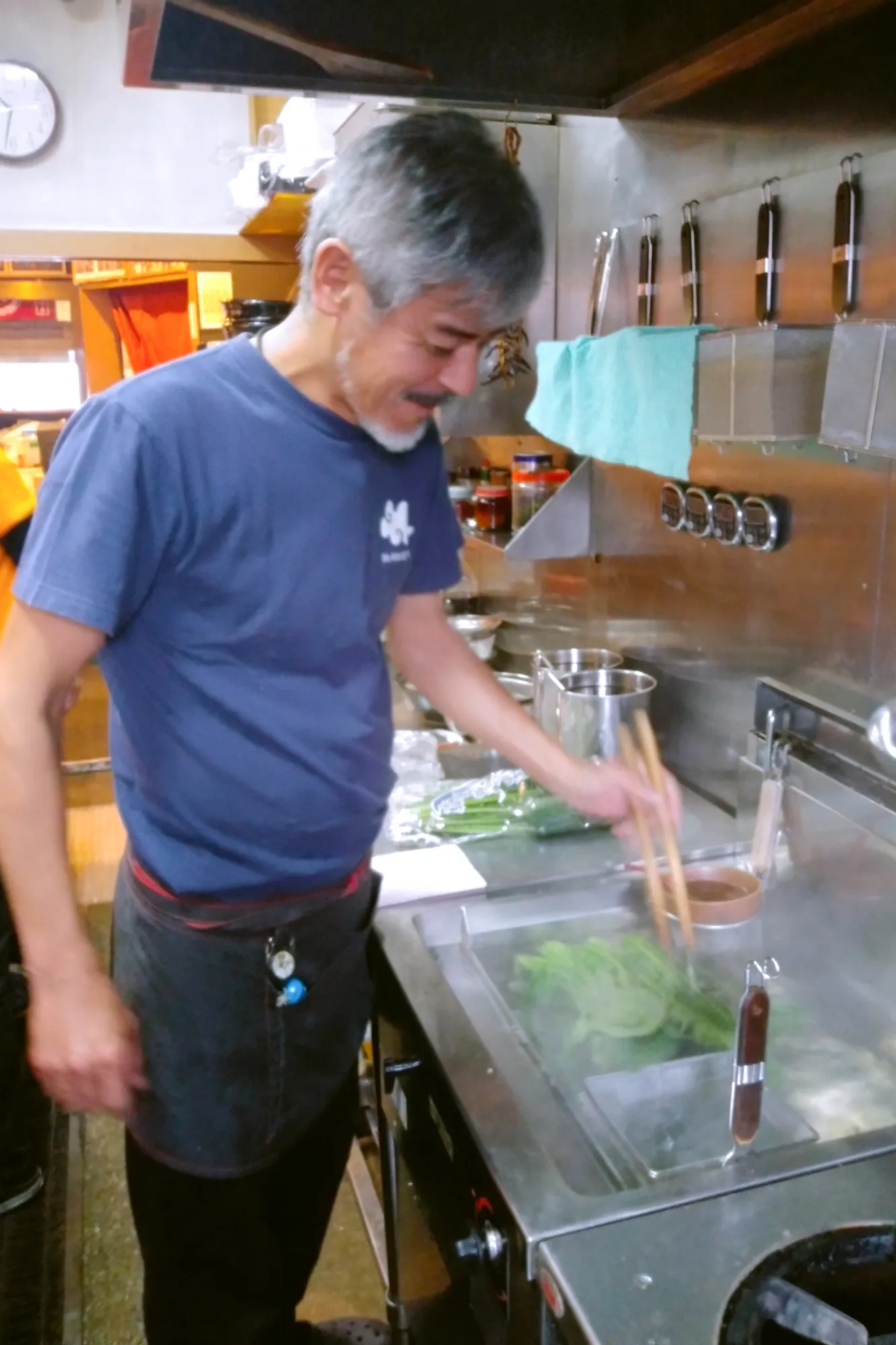
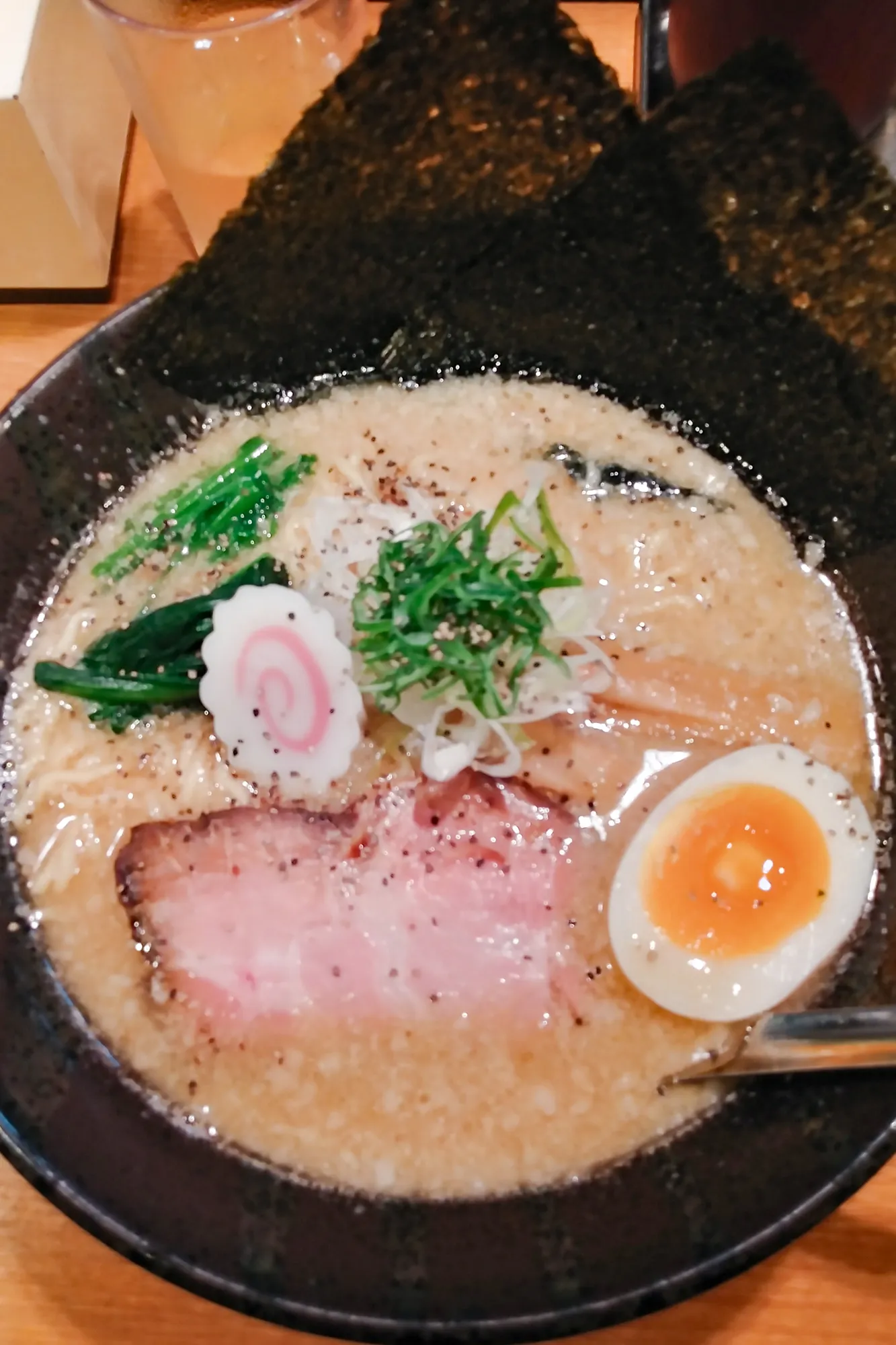
The restaurant opens at 11:00 a.m., and they receive the first order for the special ramen of the day. The instructor guides Sam and Miguel through every step until the ramen is served to a customer: boiling noodles, heating the soup, mixing the miso-flavored sauce with the soup, draining water from the noodles, placing the noodles in a bowl, and adding toppings. The instructor also teaches them professional techniques to drain water from the noodles and loosen them in a bowl so that they look more delicious. Although preparation takes an entire day, once they receive an order, they must serve it to the customer within minutes. It’s a race against time.
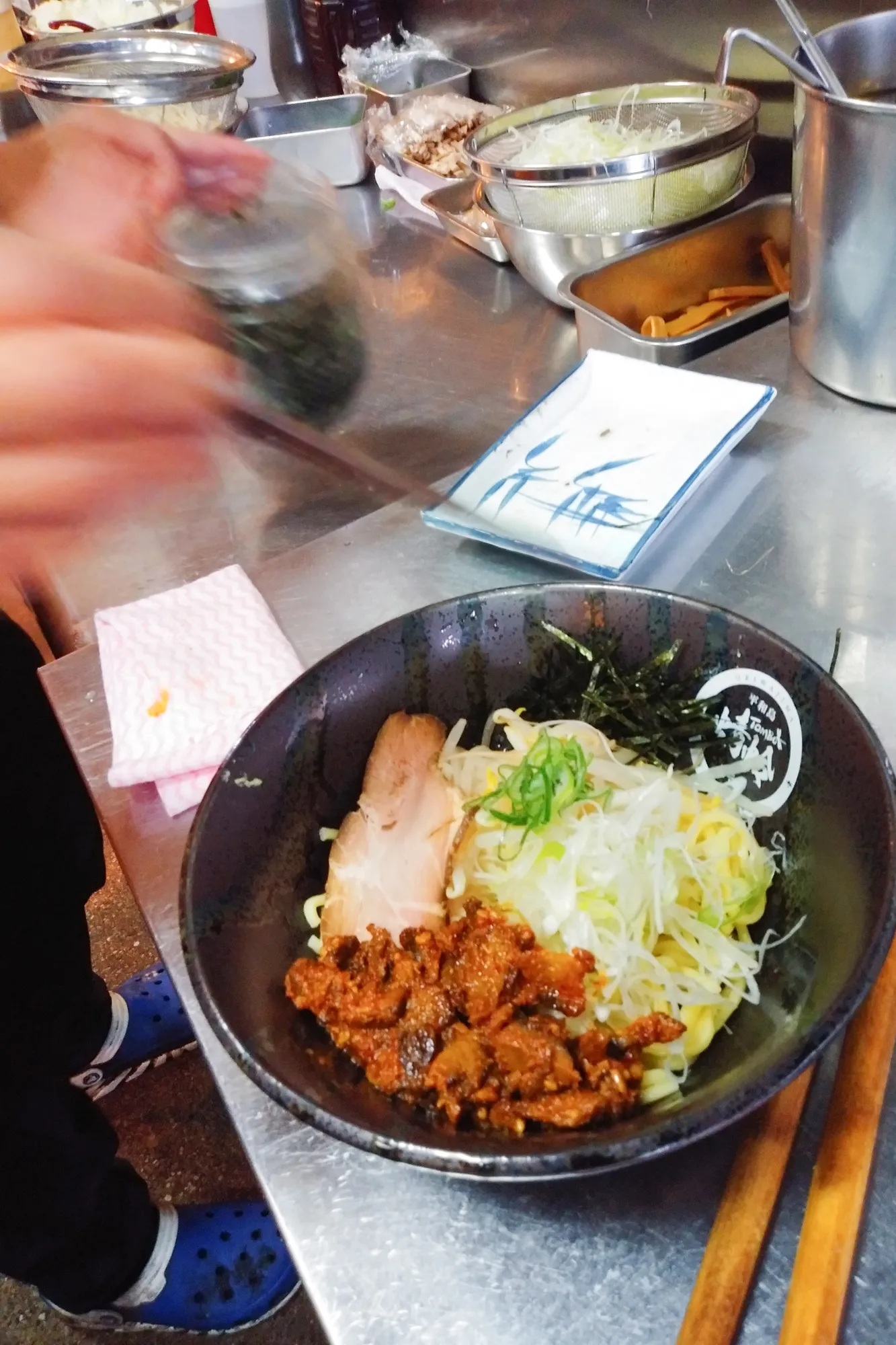
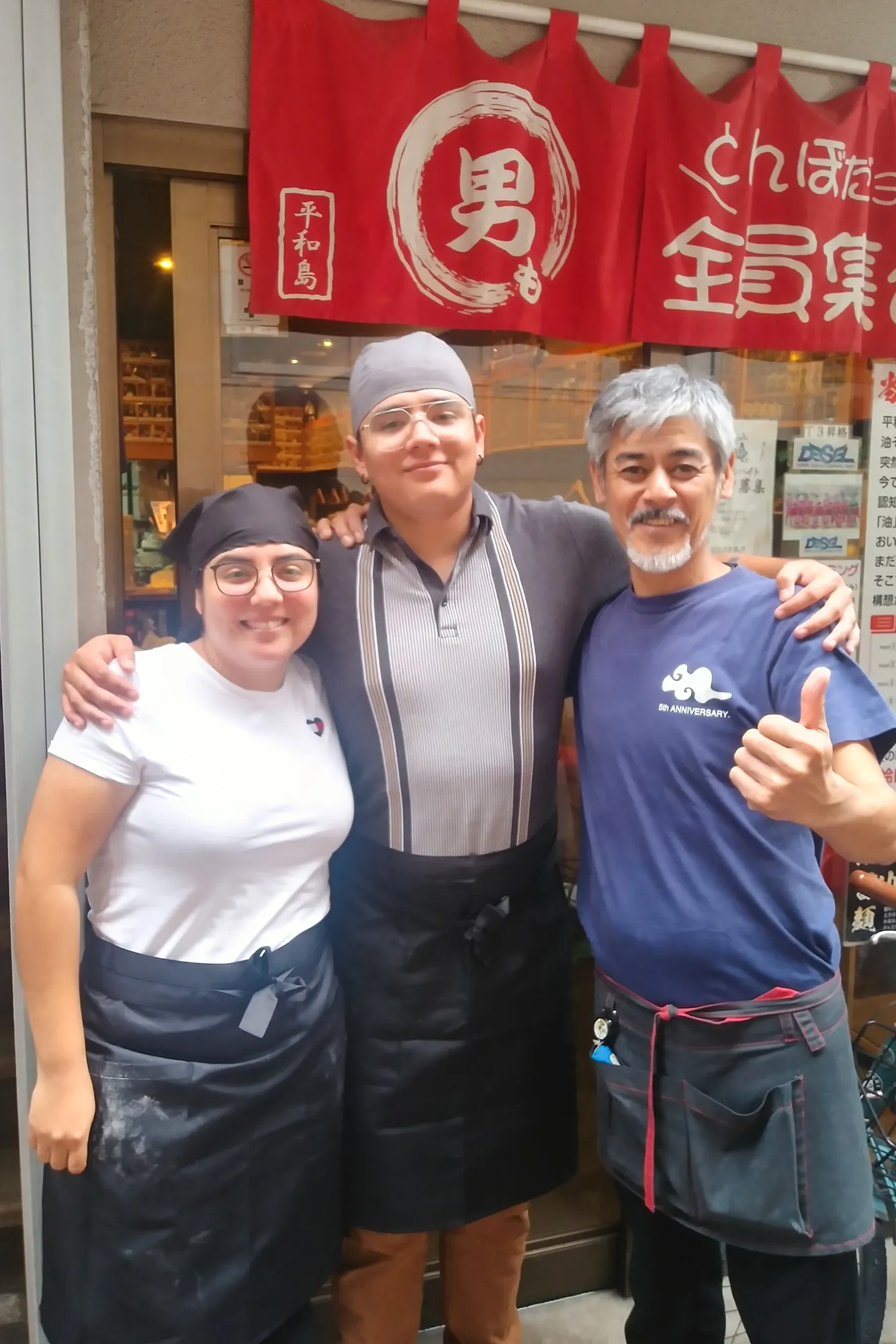
They also learn how to serve ‘aburasoba,’ which is Tombo’s specialty. The restaurant gets busier and busier between noon and 1:00 p.m. This is the first time Sam and Miguel have experienced the operation of a ramen specialty restaurant, but they act promptly without panicking, as if they have been working at Tombo for a long time! Then, they serve the special ramen or aburasoba to the customers with big smiles. We hope that they will make good use of this experience at their own restaurant in the near future!

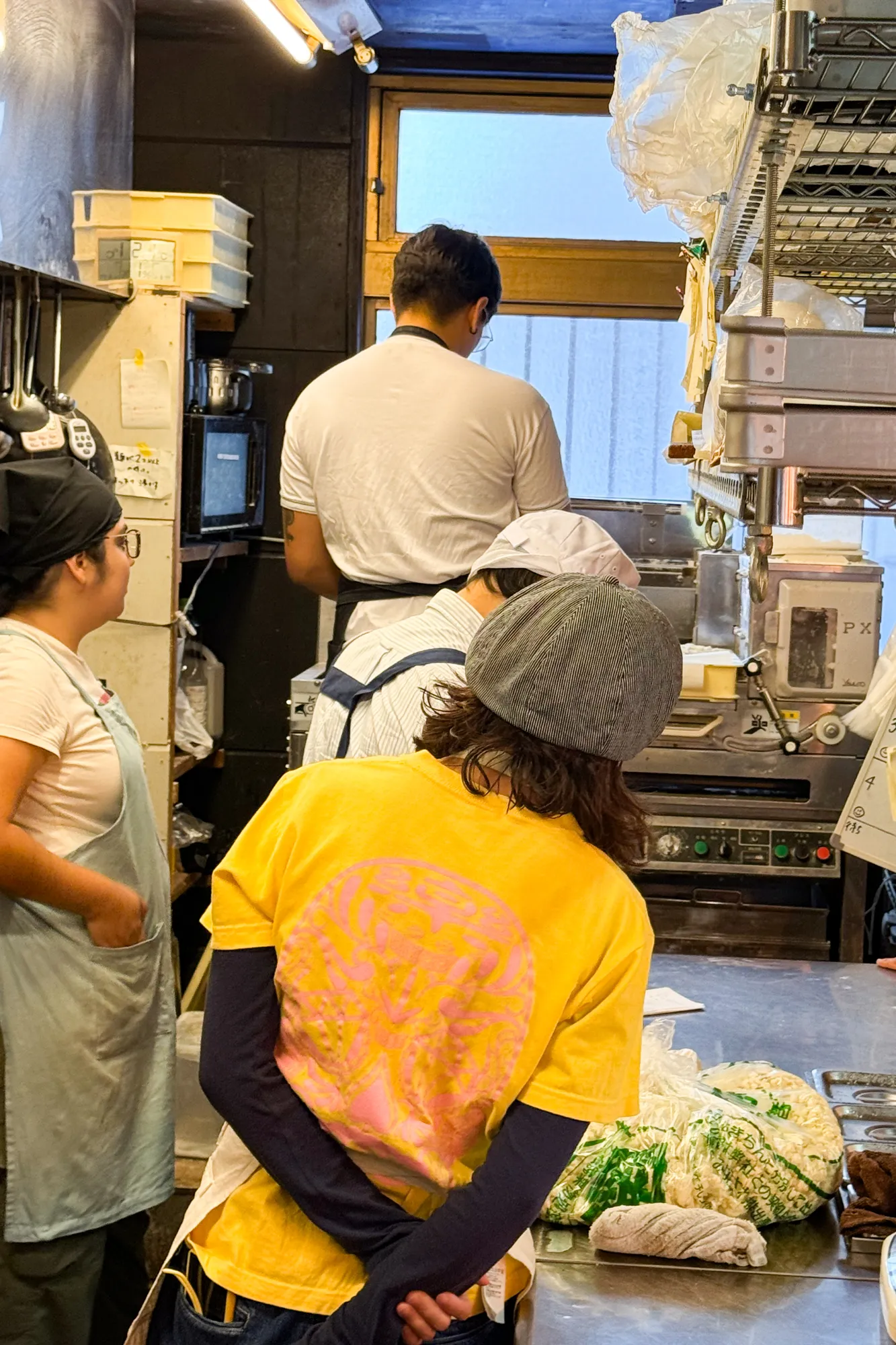
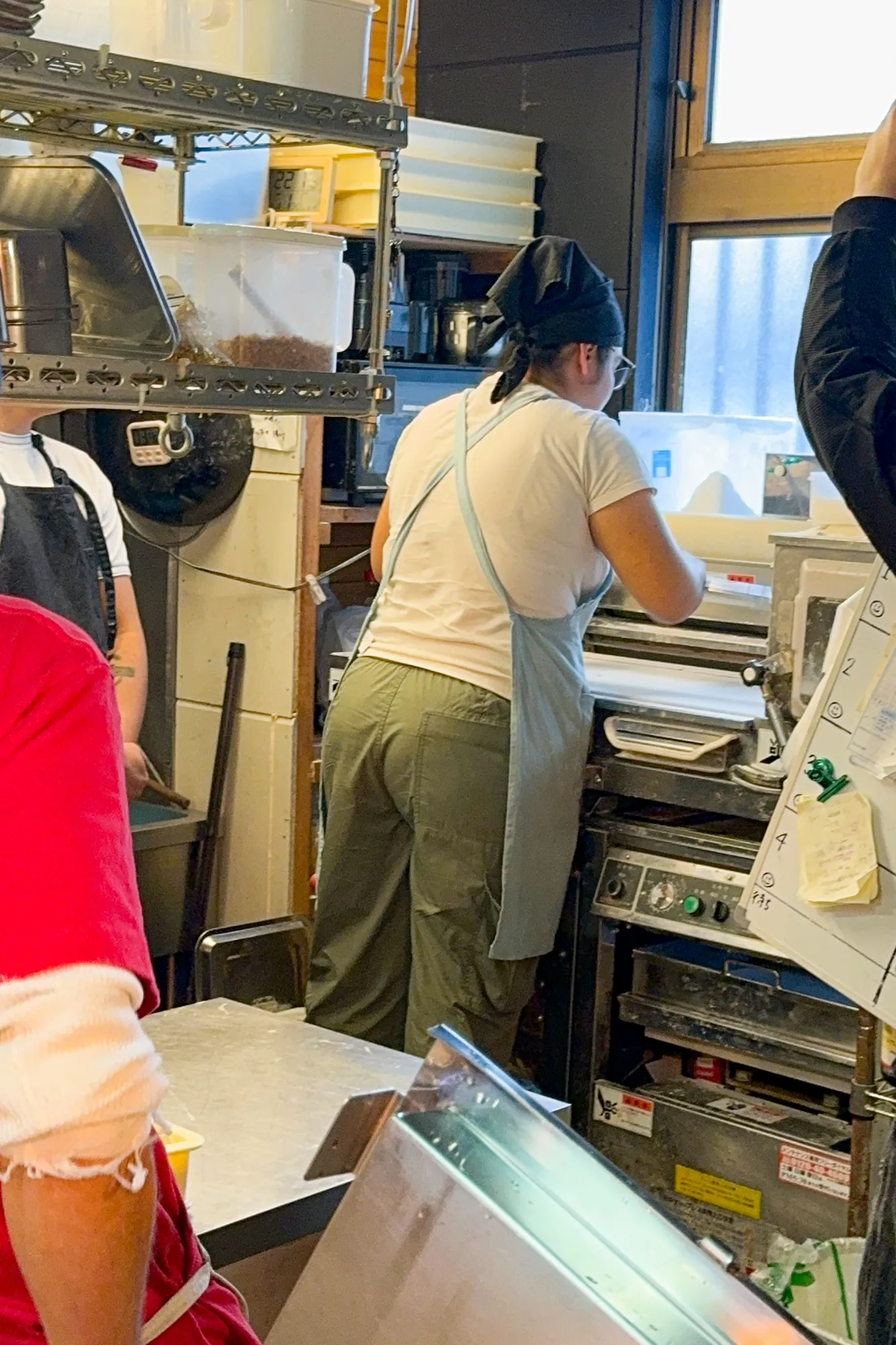
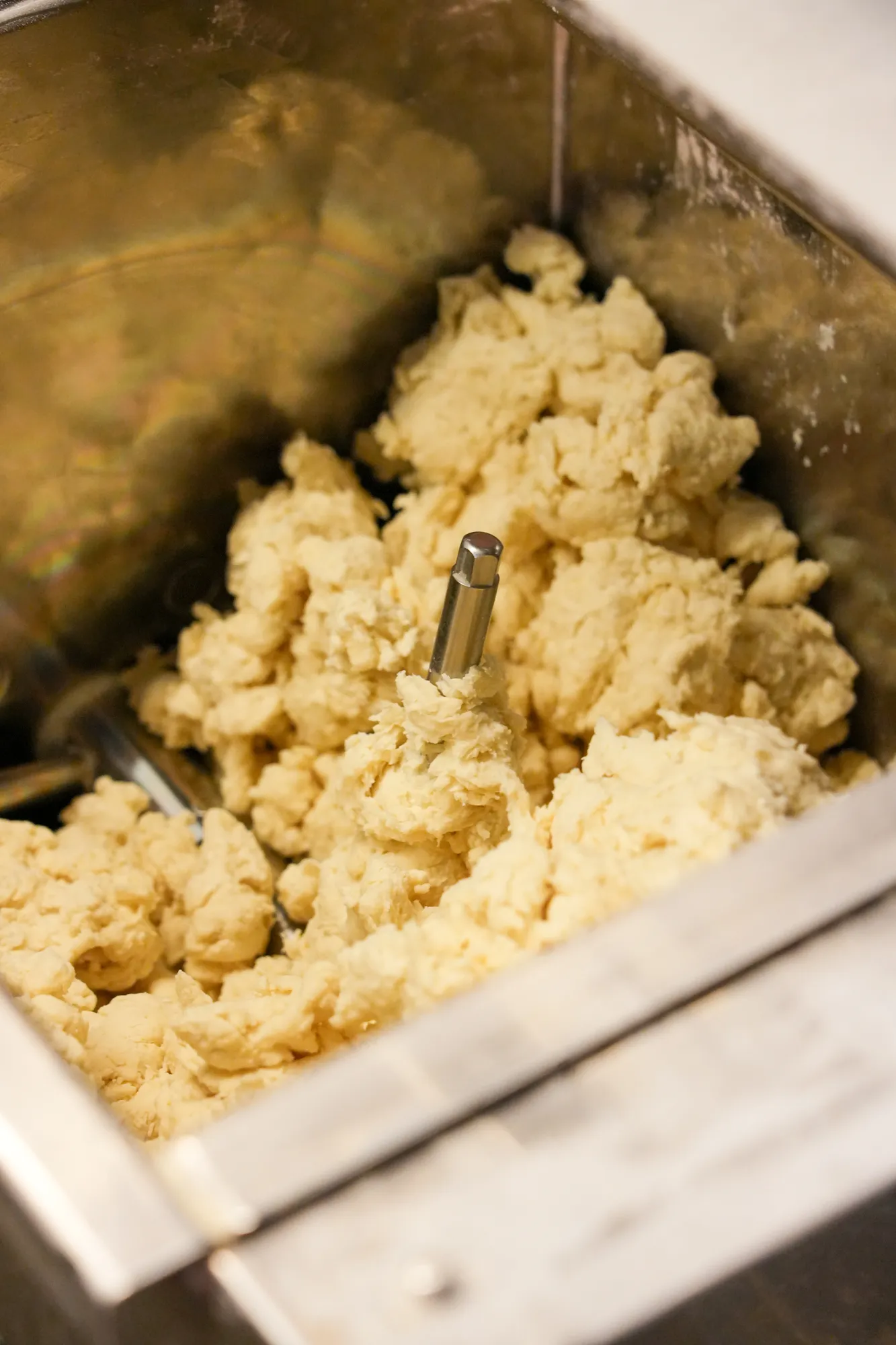
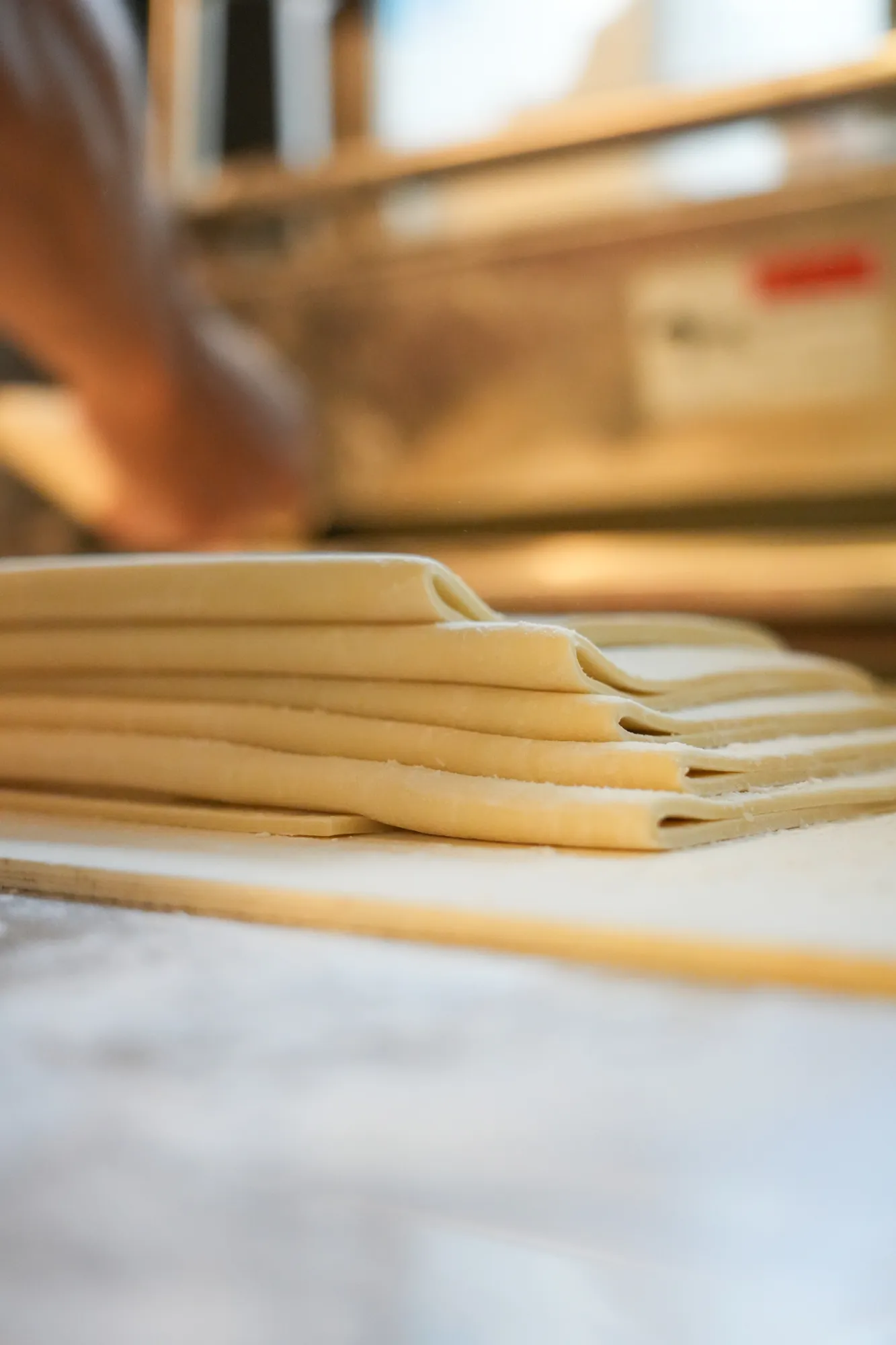
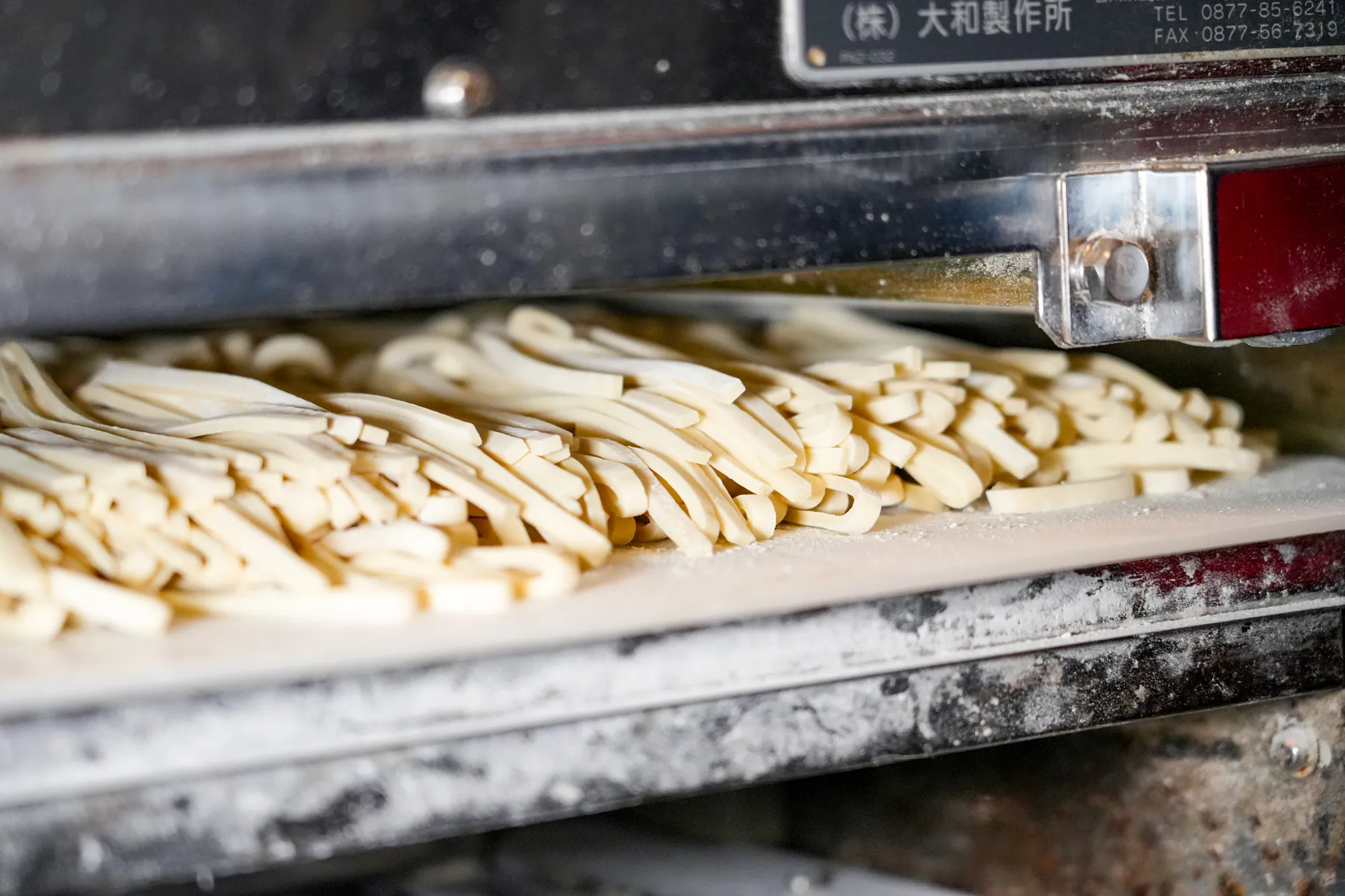
[ Three-day session at Kouraku ]
The aim of the first day is to allow Sam and Miguel to experience noodle making. The instructor demonstrates how to use the noodle-making machine step by step. Then, Miguel and Sam give it a try and successfully make ramen noodles for the first time. They also compare the noodles they’ve just made with those made the previous day and those that have been frozen for a while. Additionally, the instructor prepares several kinds of ramen for them to taste, such as a blend of broth from oysters and clams and another from pork bones and whole chickens, as well as a blend of fish broth with pork and chicken broth. The instructor adjusts the ratio of fish broth to pork and chicken broth to illustrate the difference in taste. After tasting several varieties of ramen, they discover that they prefer traditional, simple ramen, which is the style they will strive for.

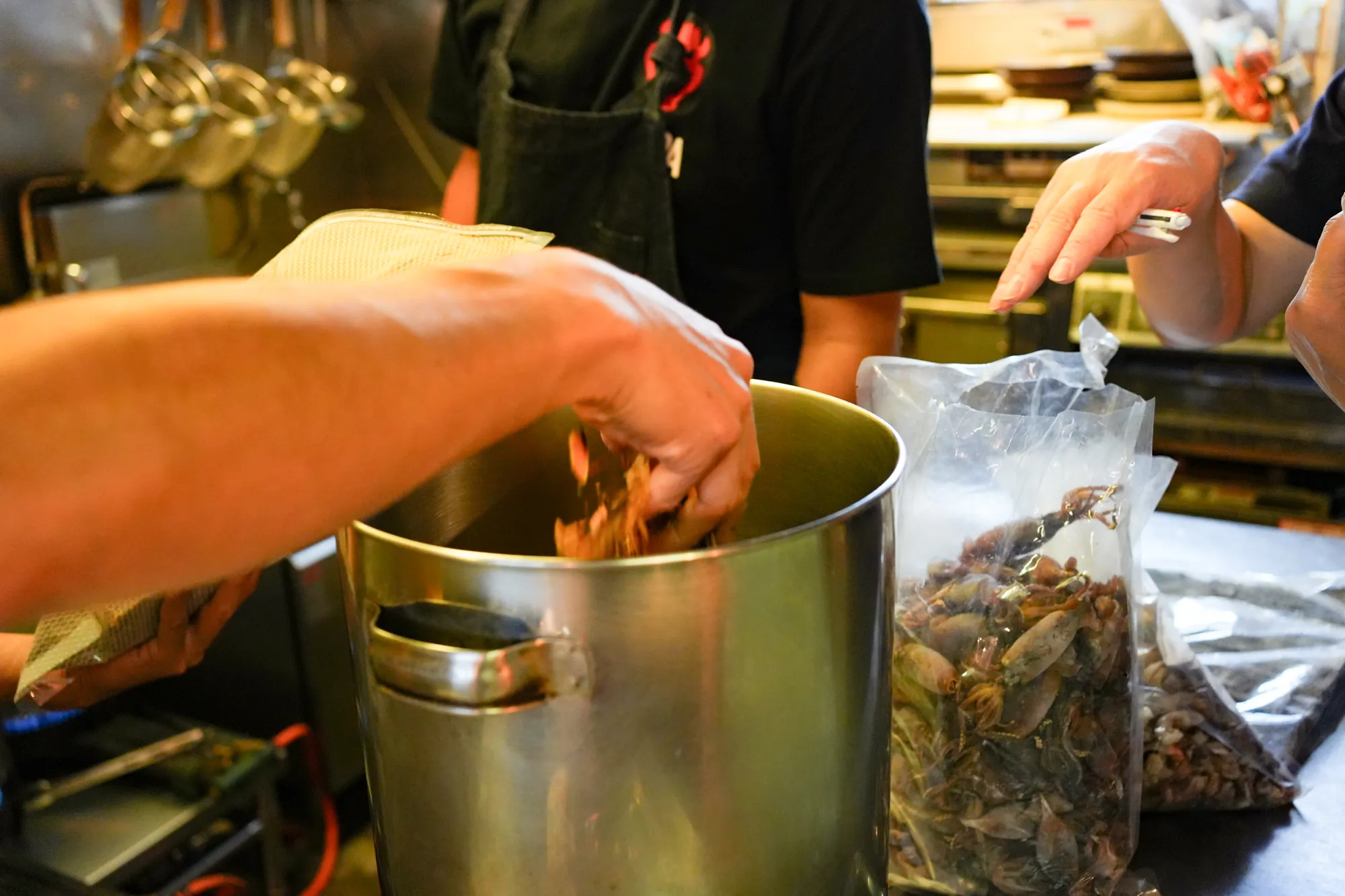
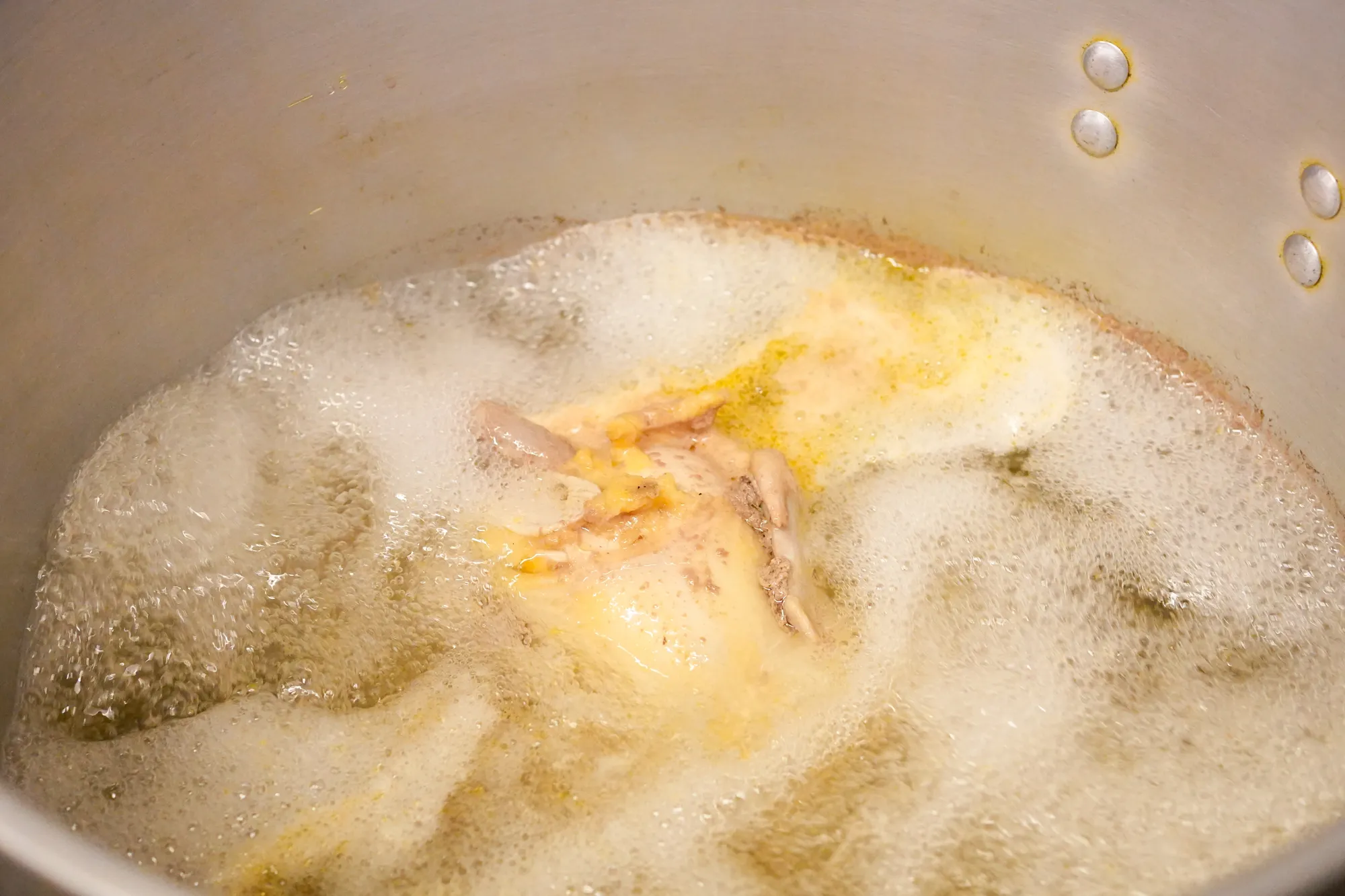
The goal of the second day is to learn how to prepare a broth from pork bones and whole chickens within a day, prepare a broth from fish, make a soy-flavored sauce for the soup, and finally craft ramen using the noodles and soup they have made themselves.
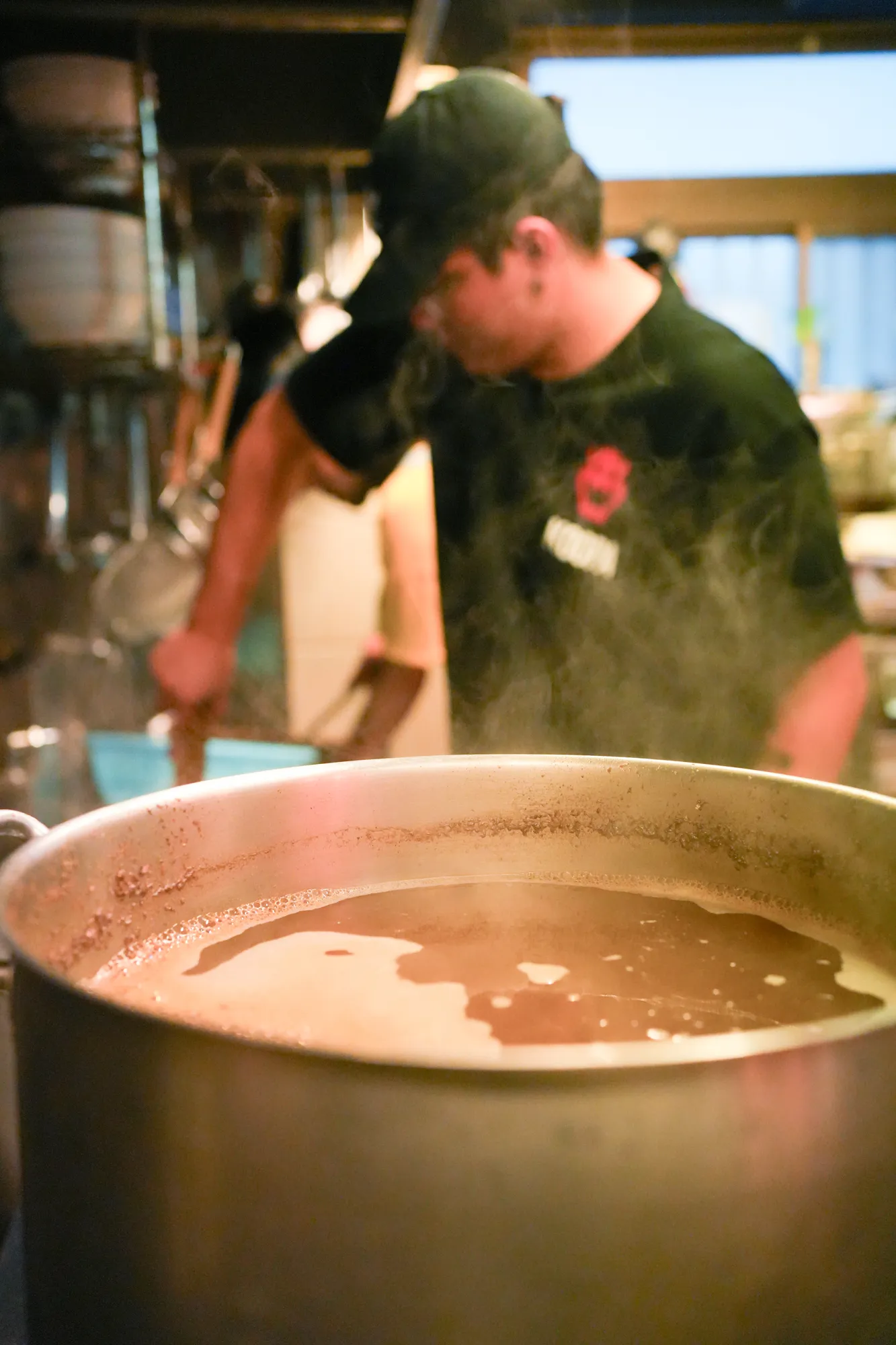
While it took about 8 hours to prepare pork bone broth at Tombo, they learn a quicker method using a pressure cooker, which may save them from a lot of physical labor. The instructor also emphasizes using fewer ingredients to keep the ramen soup simple but maximize the flavor. This surprises the students because they usually add many ingredients to their broth.
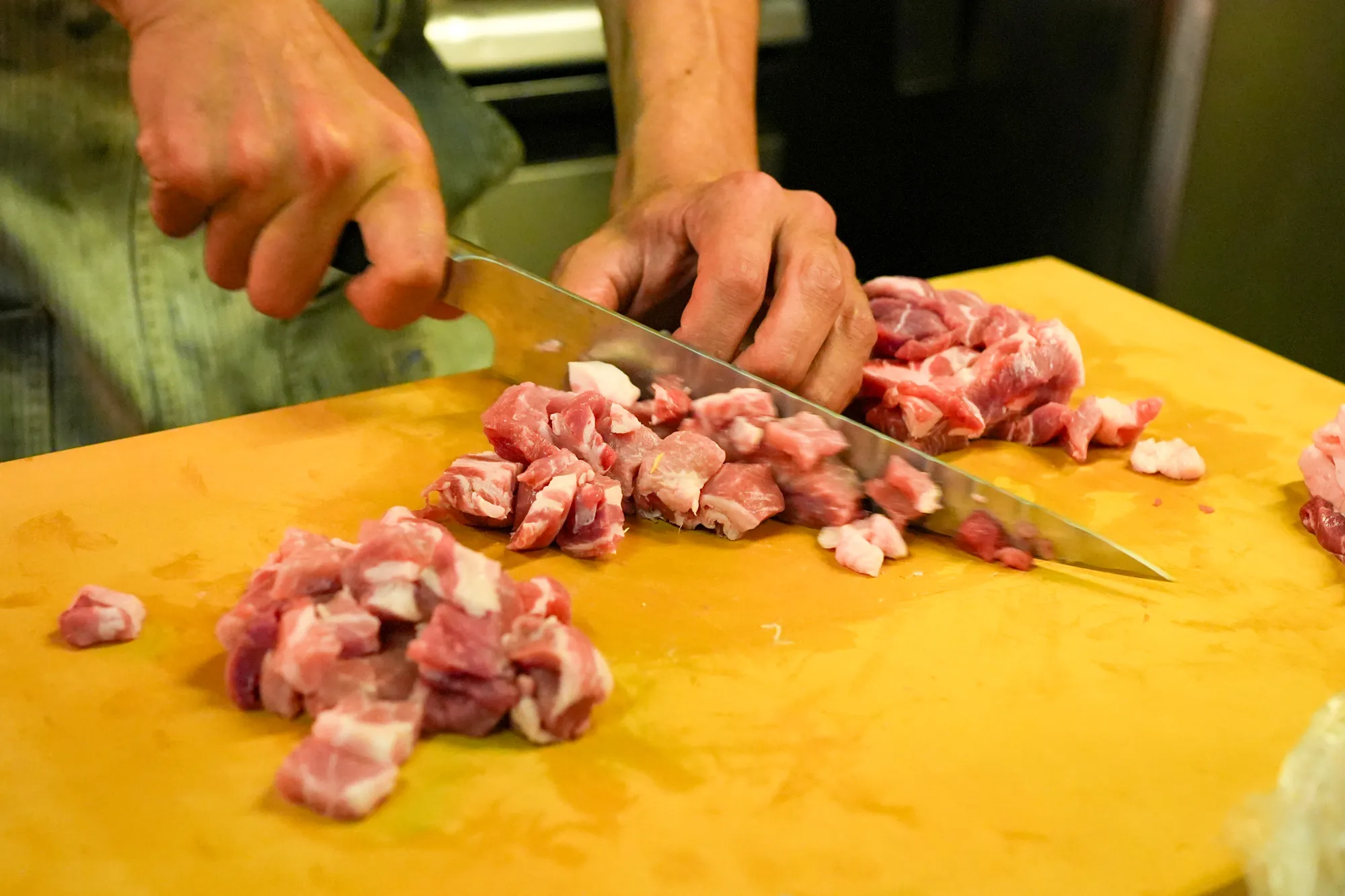
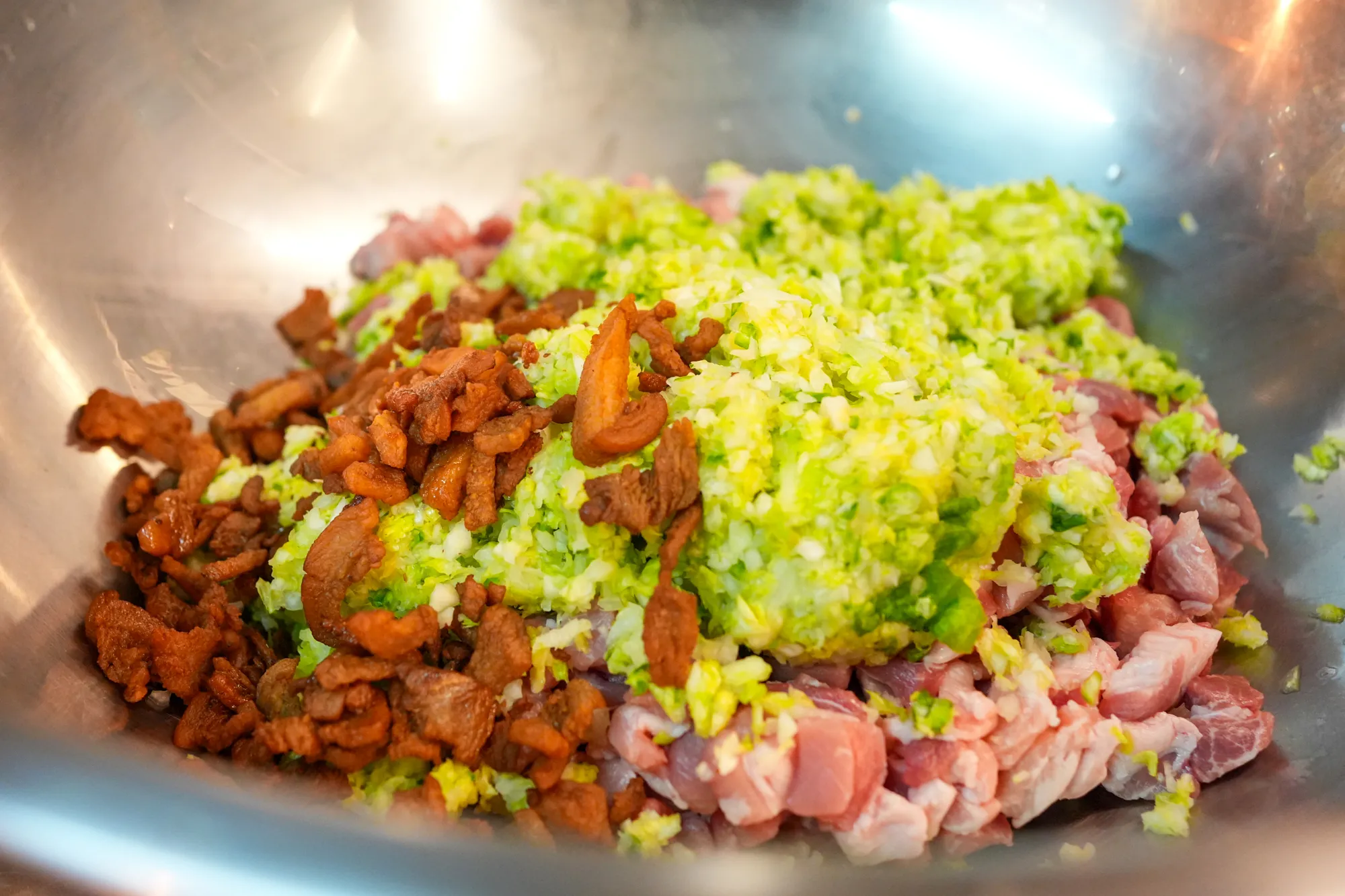
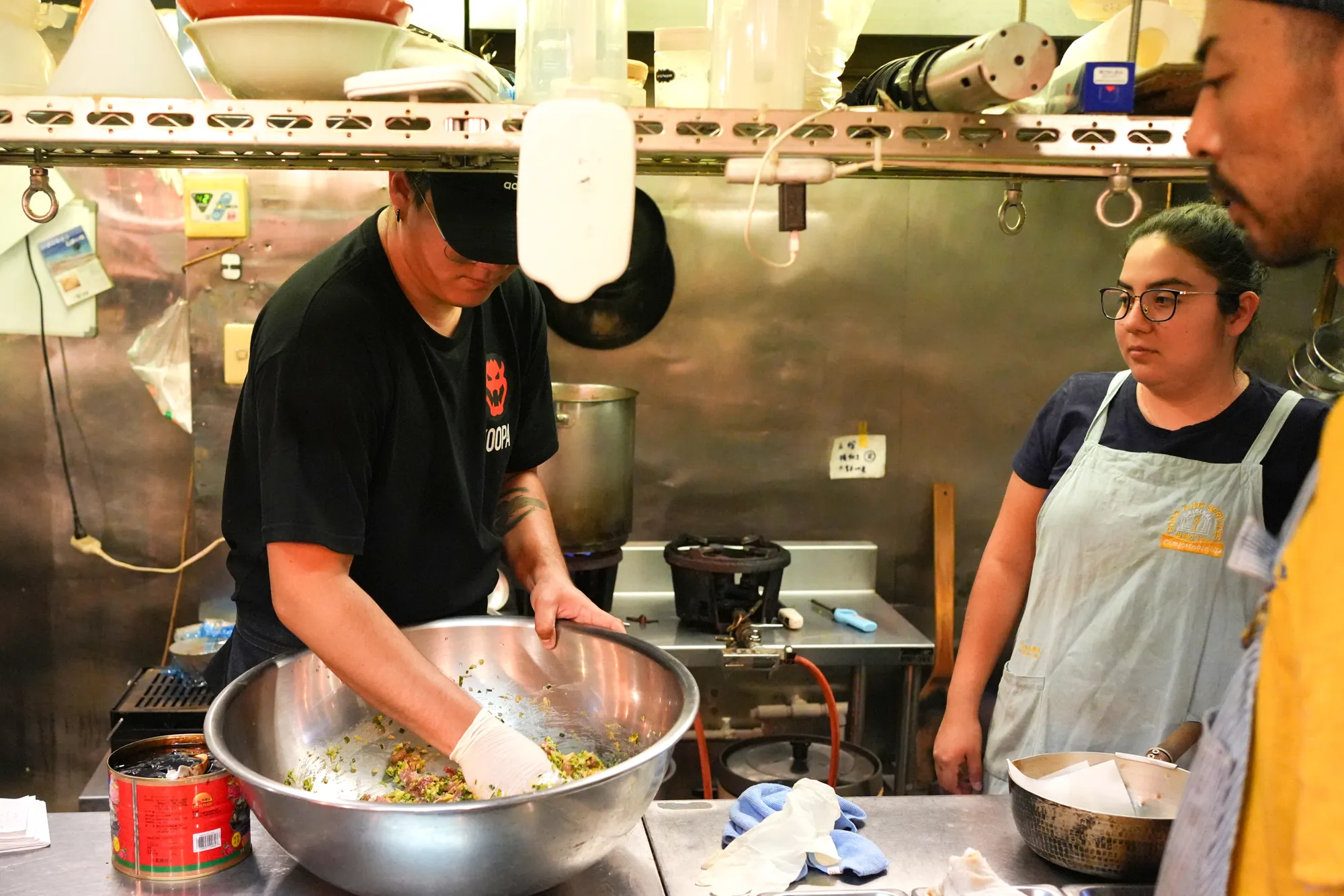
While waiting for the broths to be ready, Sam and Miguel prepare the fillings for gyoza. In addition to his expertise in ramen, the instructor has also mastered the art of making gyoza. His exceptional skill in gyoza making led him to open a specialty gyoza restaurant.
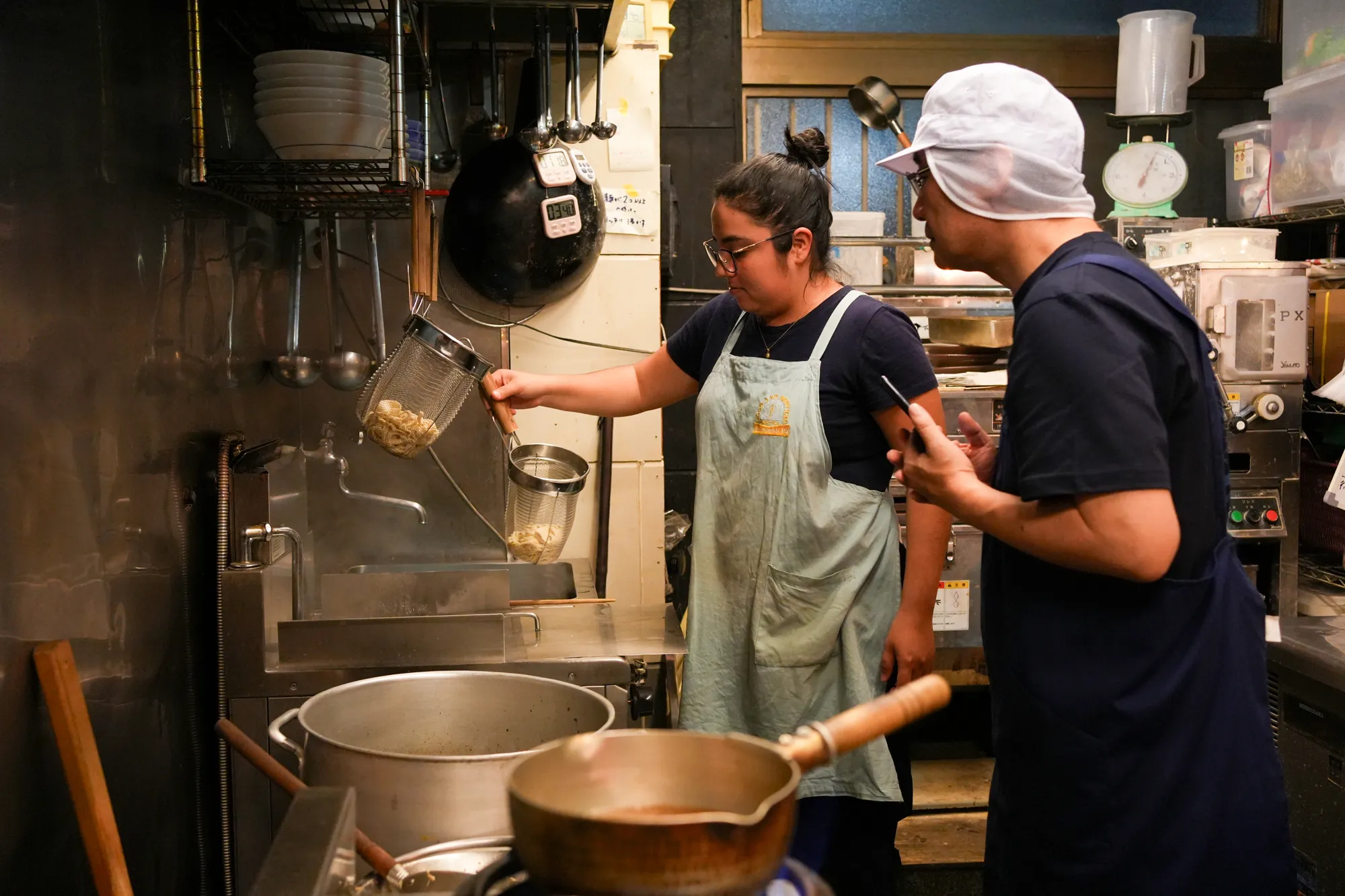
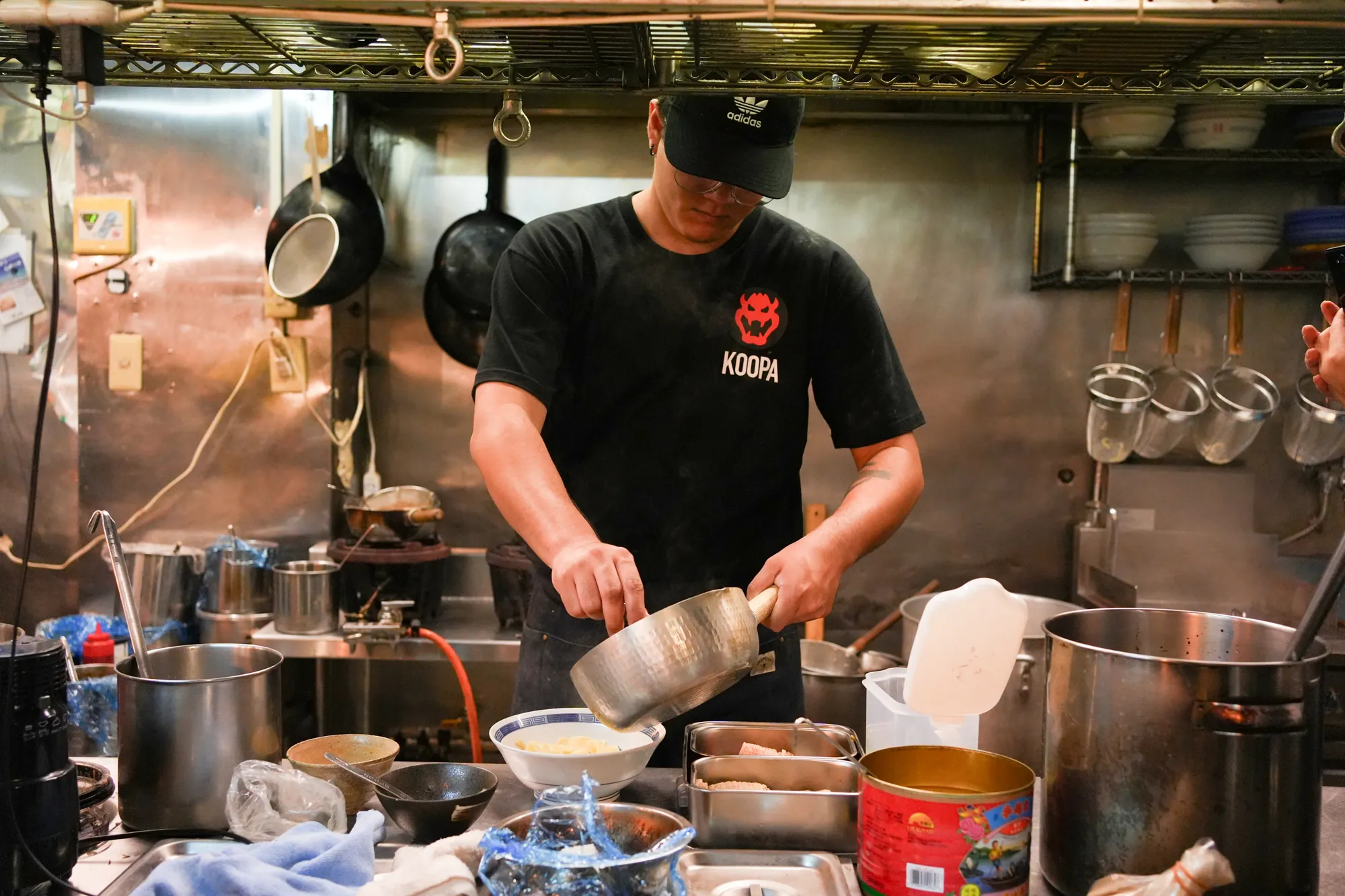
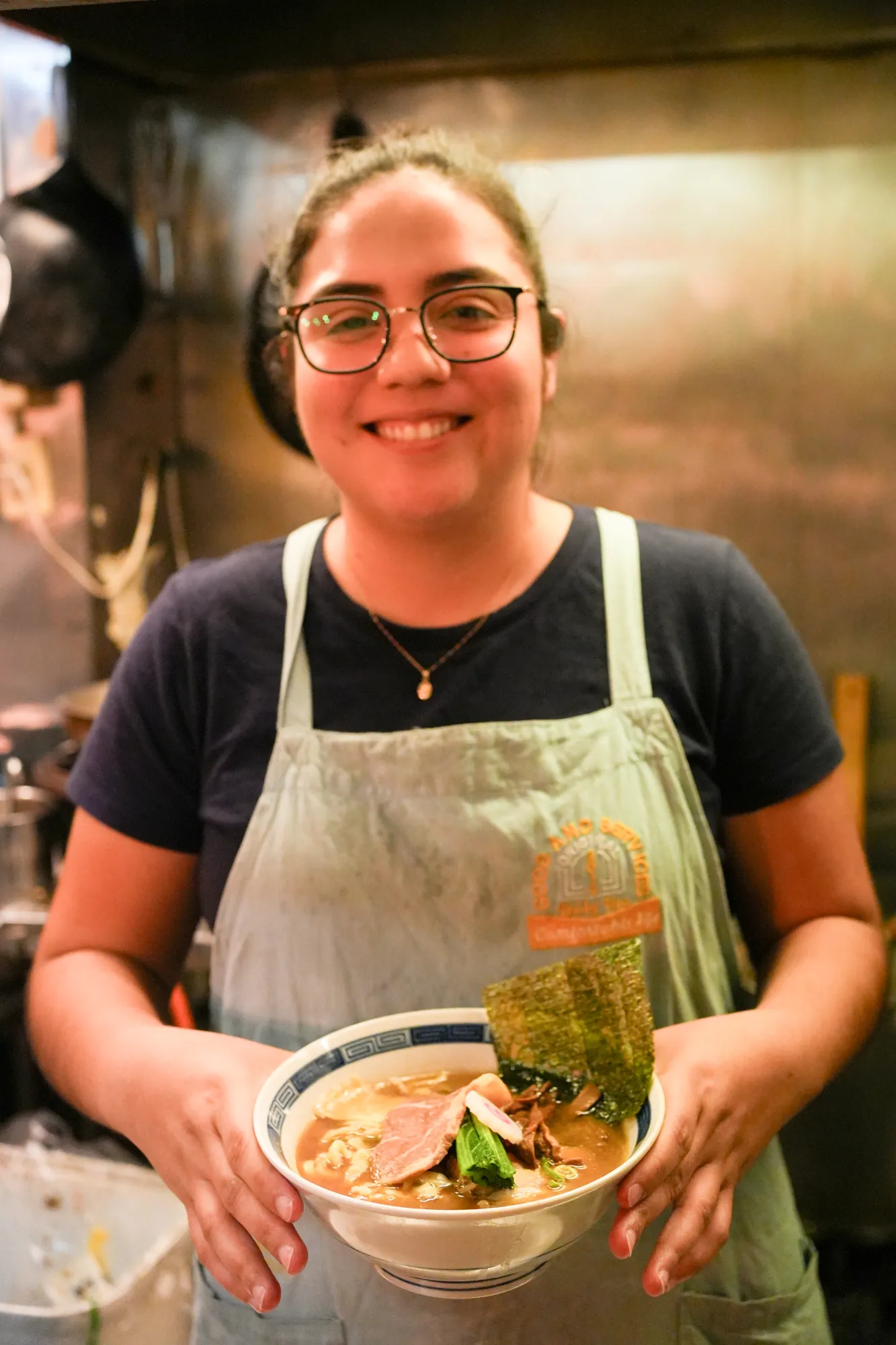
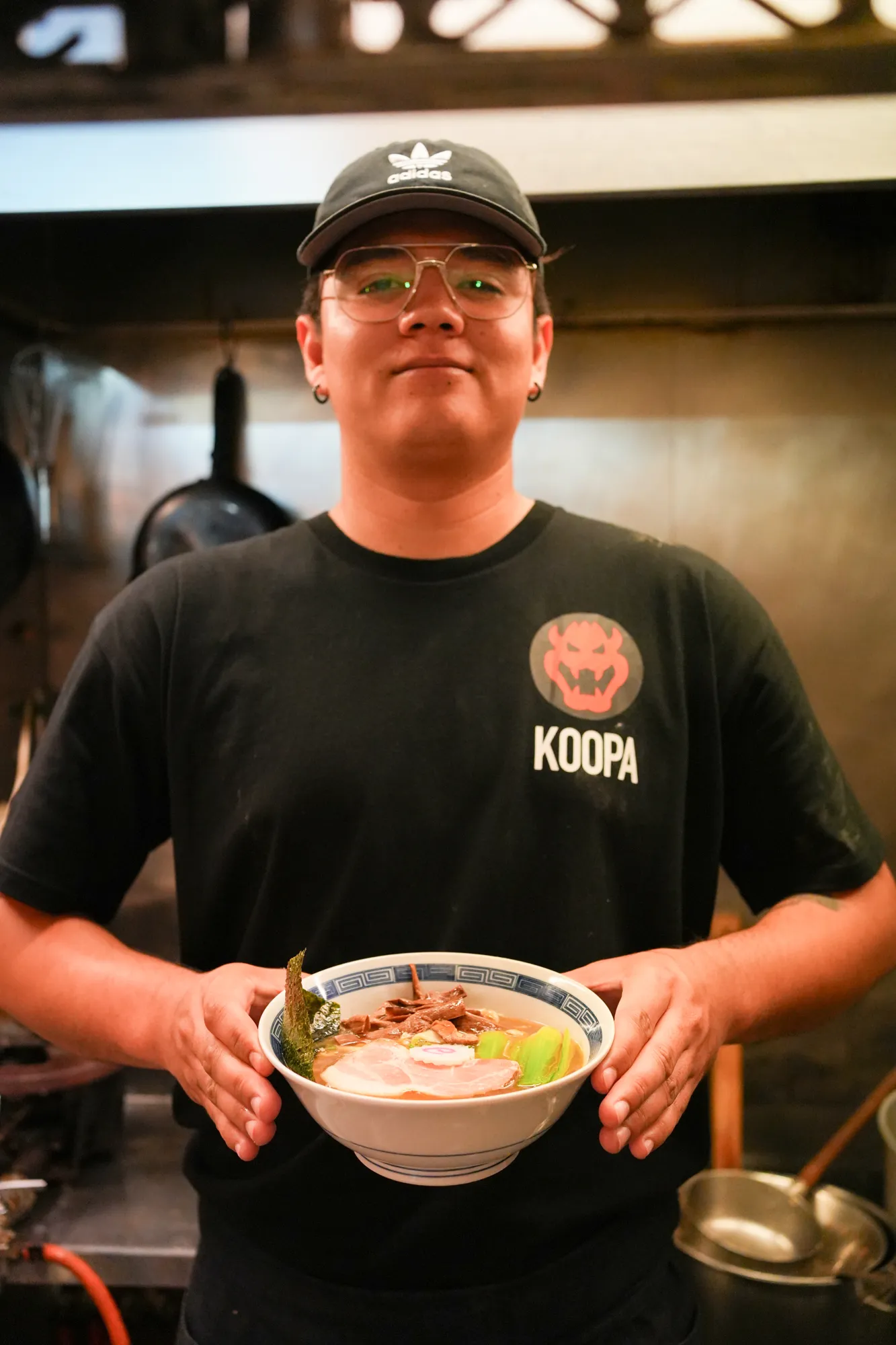
At the conclusion of the second day, they prepare ramen using the noodles and soup they made themselves under the guidance of the instructor. Finally, they add toppings to the ramen and enjoy tasting it, which is the happiest moment they have been waiting for!
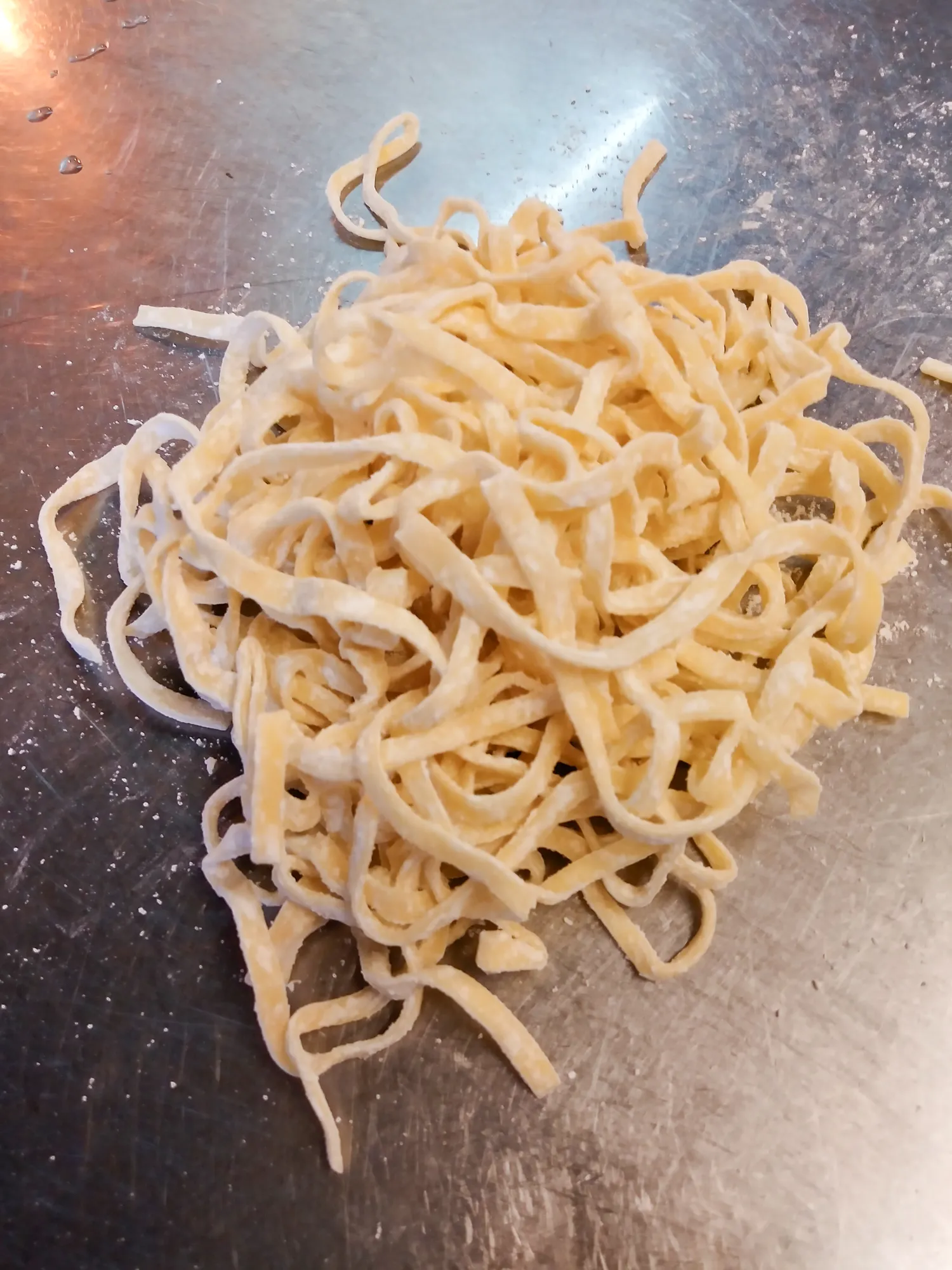
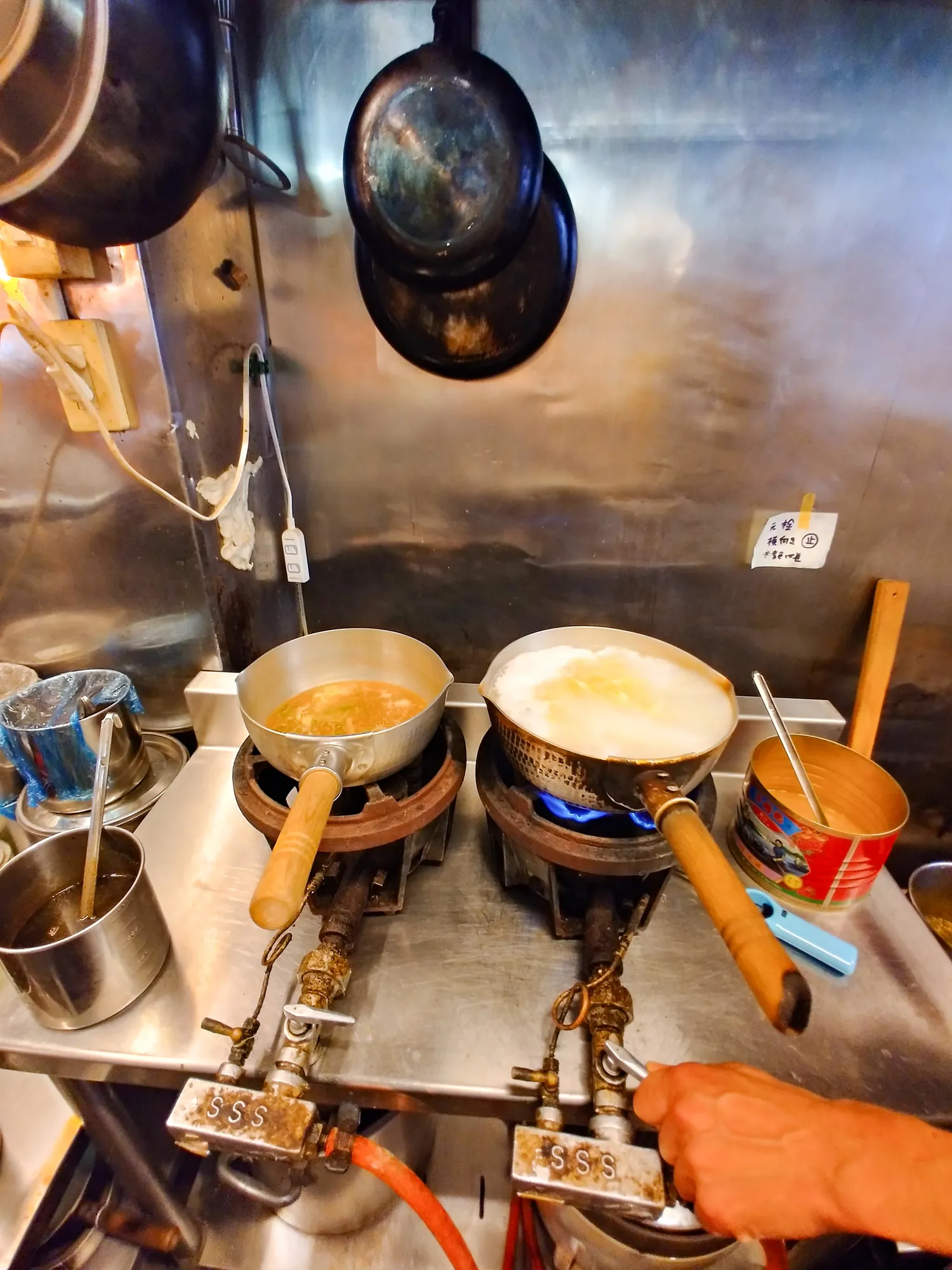
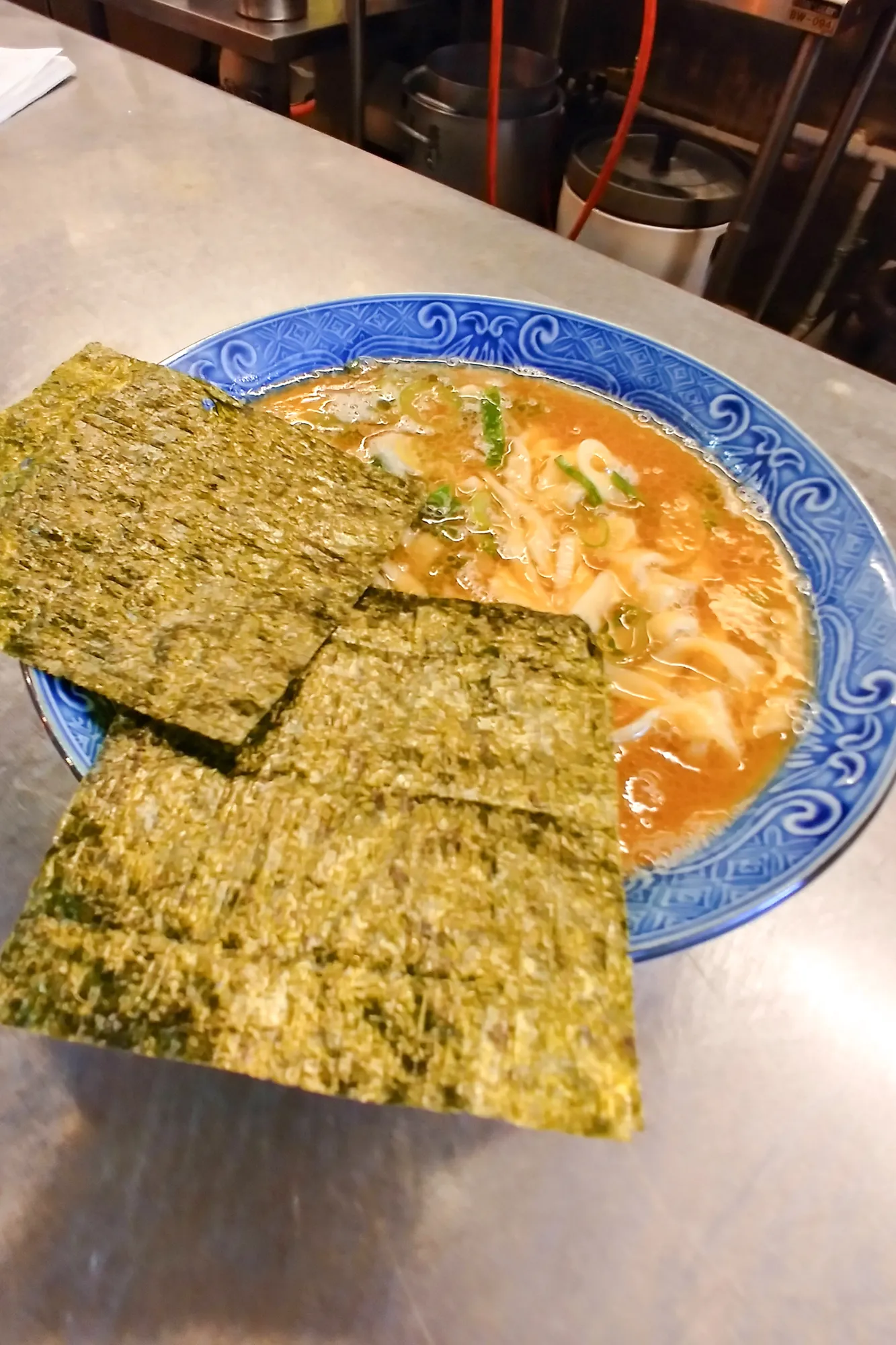
The objective of the final day is to learn some useful techniques to increase the variations of ramen using the same animal-based broth and ingredients readily available in Mexico. Again, the aim is to minimize the number of ingredients used and maximize the flavor of the ramen soup.
They begin with ‘Iekei’ ramen, which is one of the most popular styles of ramen all over the world. It originated in Kanagawa, featuring ‘tonkotsu’ (pork bones) soy sauce-flavored soup with Chinese noodles. The instructor uses the animal-based soup that they made the previous day with a simple soy-flavored sauce and crafts ‘Iekei’ ramen. Sam and Miguel taste it and find it their favorite one! They say that it will probably be loved more than ramen with a fish-based soup in Mexico.
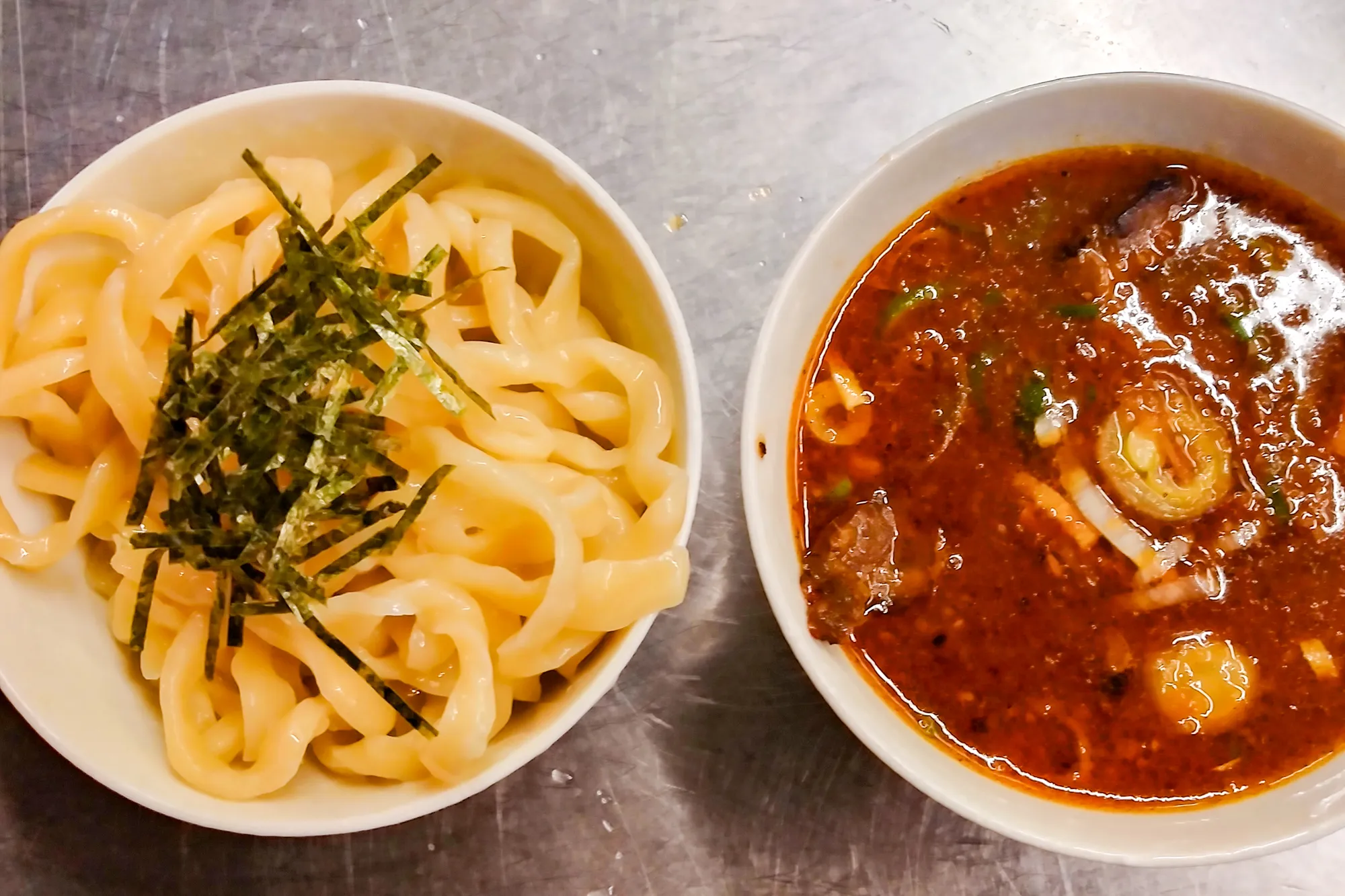
Following ‘Iekei’ is ‘Tsukemen’ (Chinese noodles served with a separate sauce to dip in). The teacher showcases the way of crafting ‘Tsukemen’ using the same animal-based broth, ginger, soy sauce, and chicken fat. A ginger and soy sauce can be made using only grated ginger and garlic, along with some common seasonings. The students learn not only how to cook ‘Tsukemen’ but also how to eat it—simply by slurping the noodles and enjoying their flavor. It is not considered rude at all to make noise when eating noodles in Japan. In fact, they enjoy it. They think that serving cold noodles with a separate sauce will gain popularity in Mexico. Additionally, since there are few restaurants serving ‘Tsukemen,’ they will be pioneers of this style of ramen in their home country!
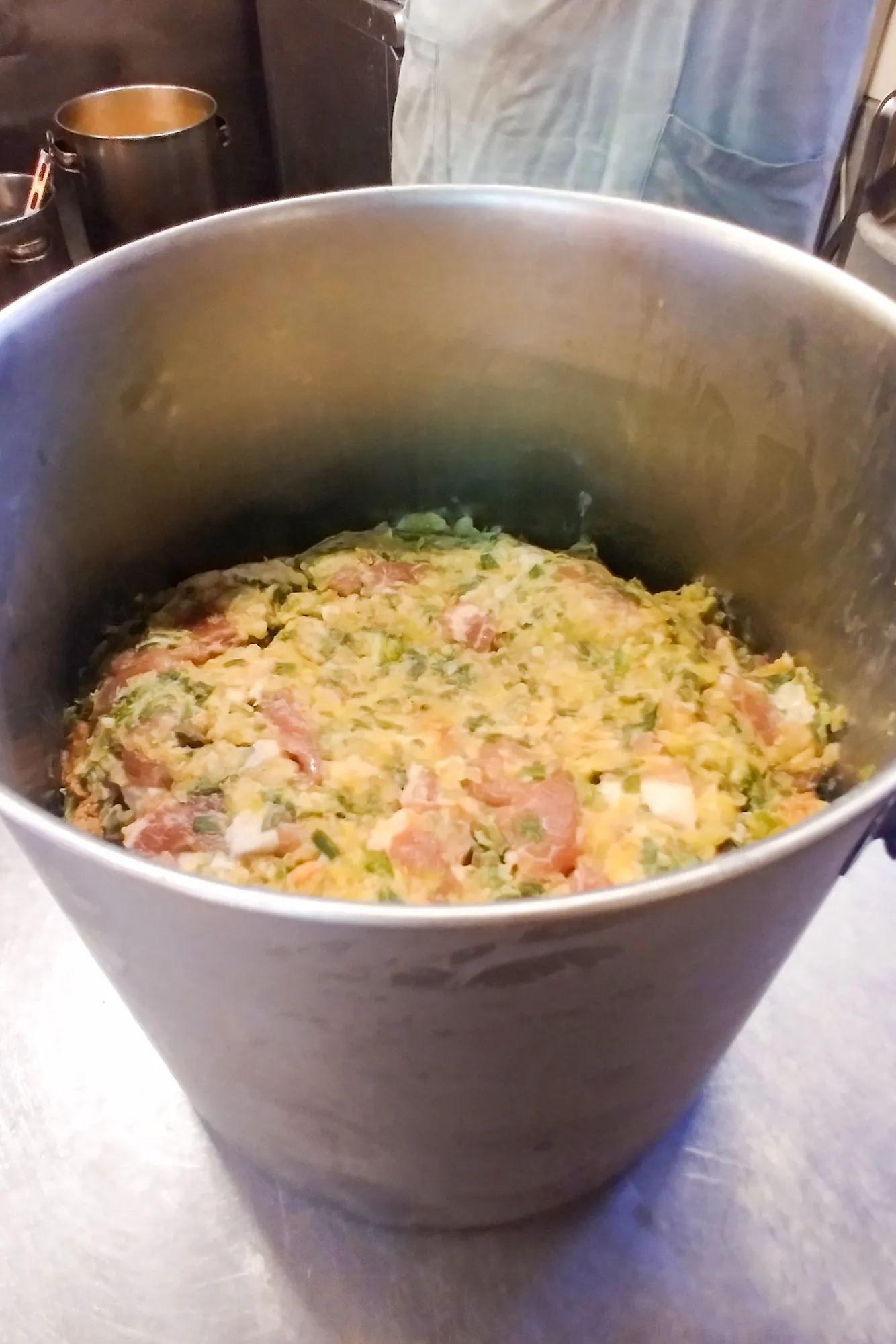
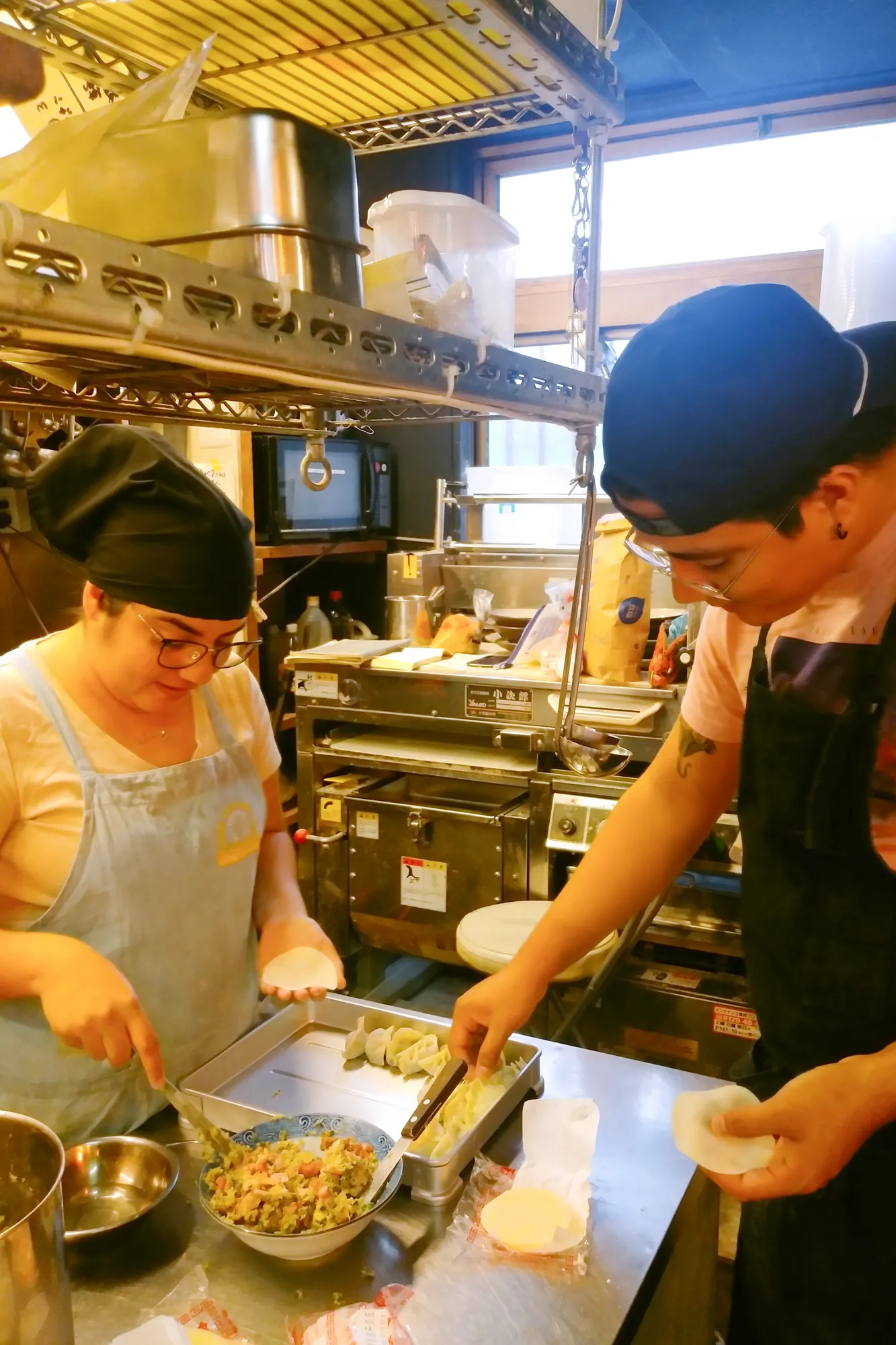
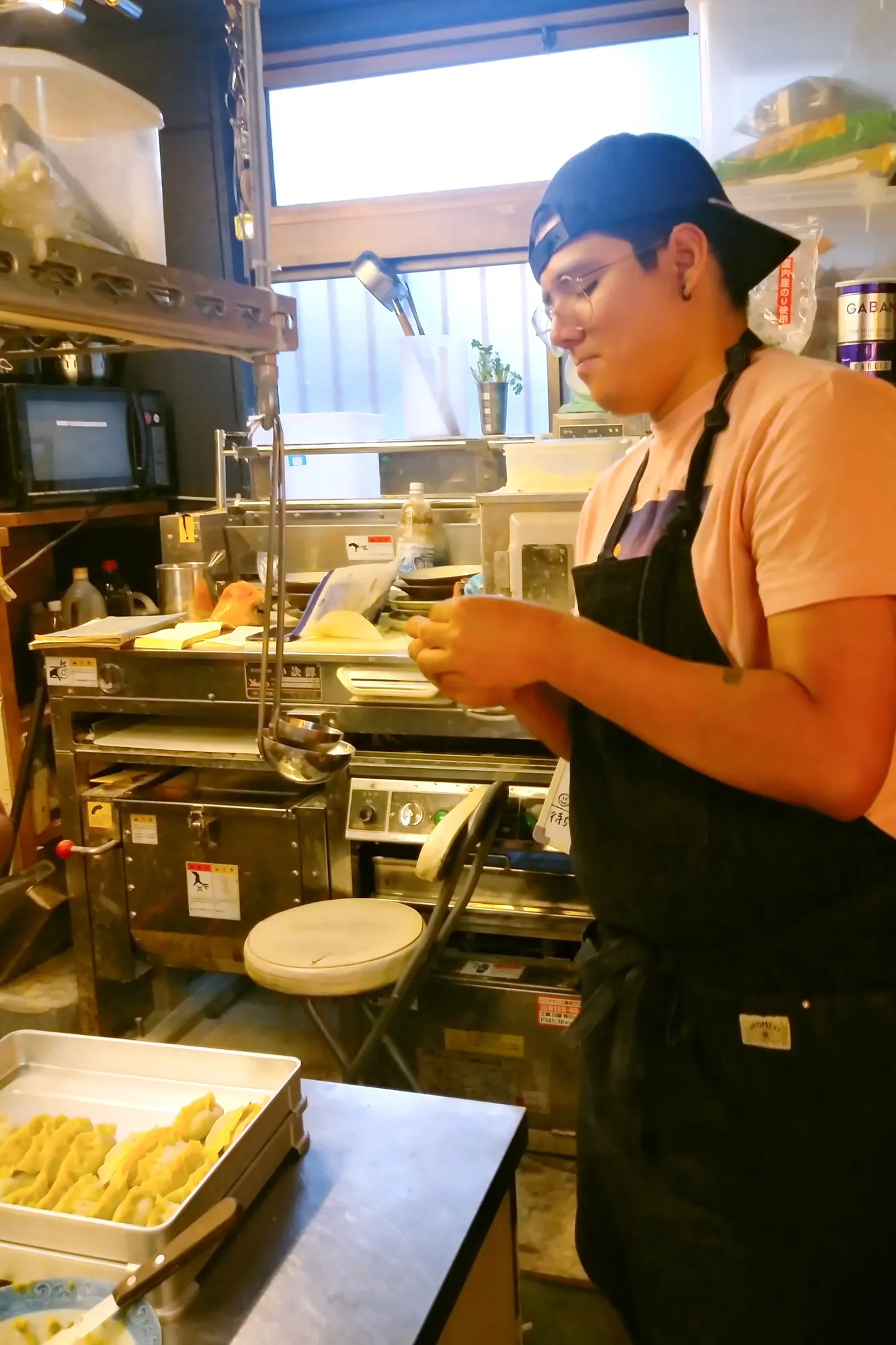
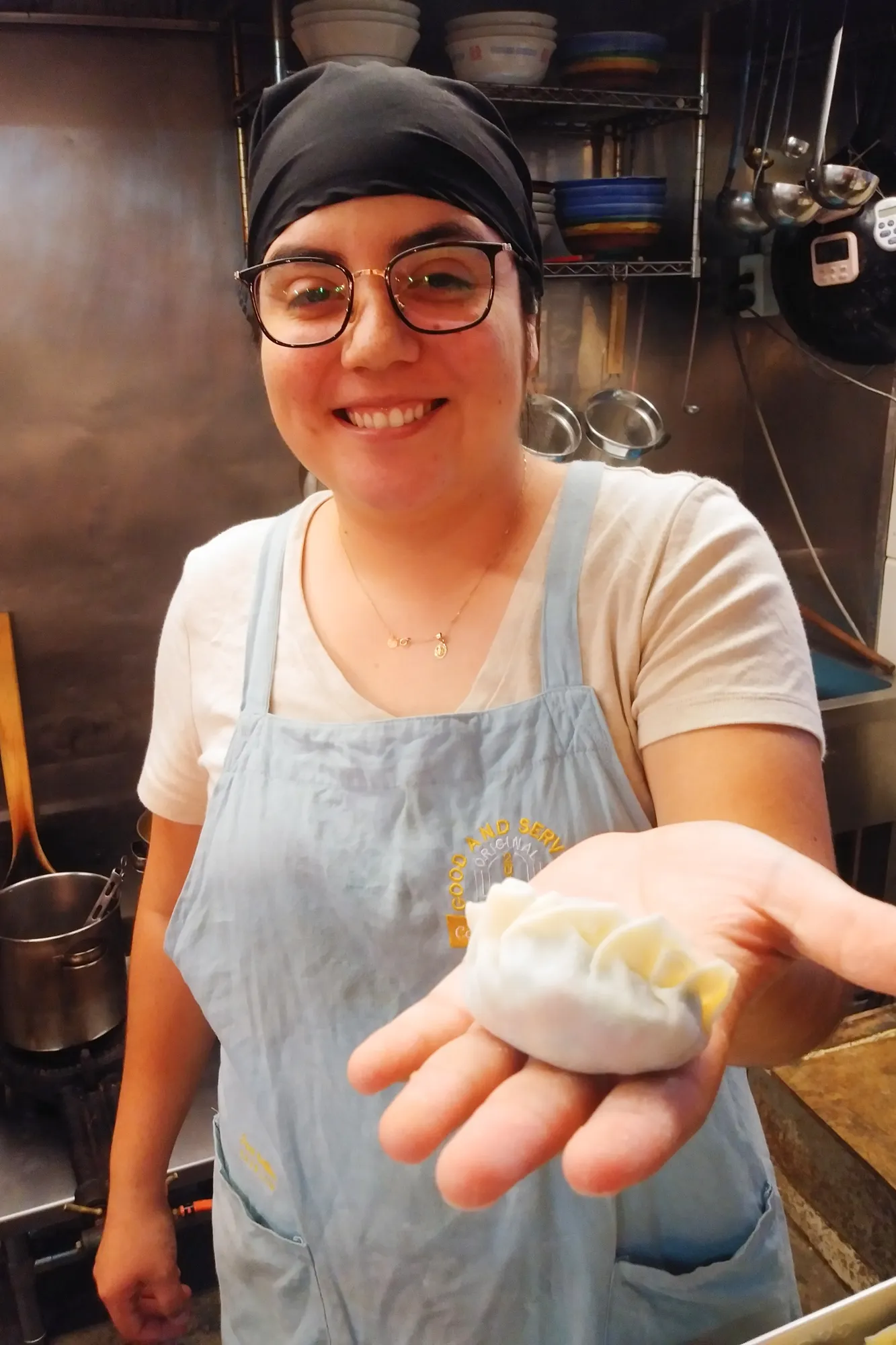
Before going to the next style of ramen, they learn to make gyoza. They practice wrapping the filling they prepared the previous day with a gyoza wrapper. First, they had difficulty wrapping the filling, but after practicing dozens of pieces, they find the right amount of filling and the correct way of using their fingers, and eventually master the wrapping technique. After pan-frying the gyoza they make themselves, they taste them with two different sauces: a soy sauce mixed with vinegar and a white sesame sauce. They prefer the white sesame sauce to the traditional soy sauce mixed with vinegar.
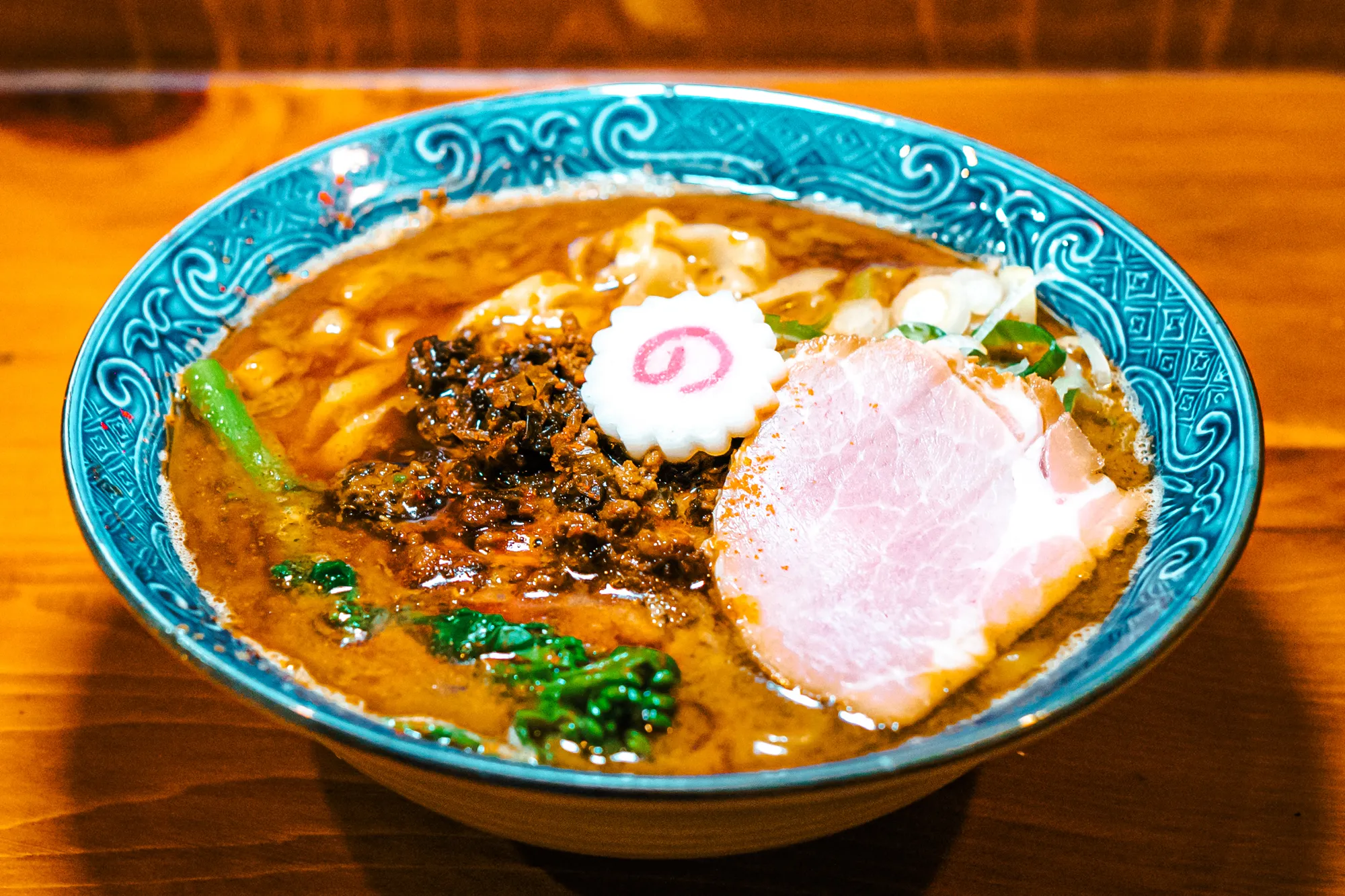
Coming up next is ‘Tantanmen’ (Szechuan-style spicy noodles). The instructor demonstrated the way of crafting ‘Tantanmen’ with the soup consisting of the same animal-based broth, soy-flavored sauce, chili oil, doubanjiang (broad bean chili sauce), minced pork, sesame oil, and other ingredients. Then, the white sesame paste is mixed with the soup. The spiciness can be adjusted from mild to super spicy by changing the ratio of the seasonings. This is the first time they have tasted ‘Tantanmen,’ but they also like this style of moderately spicy ramen.
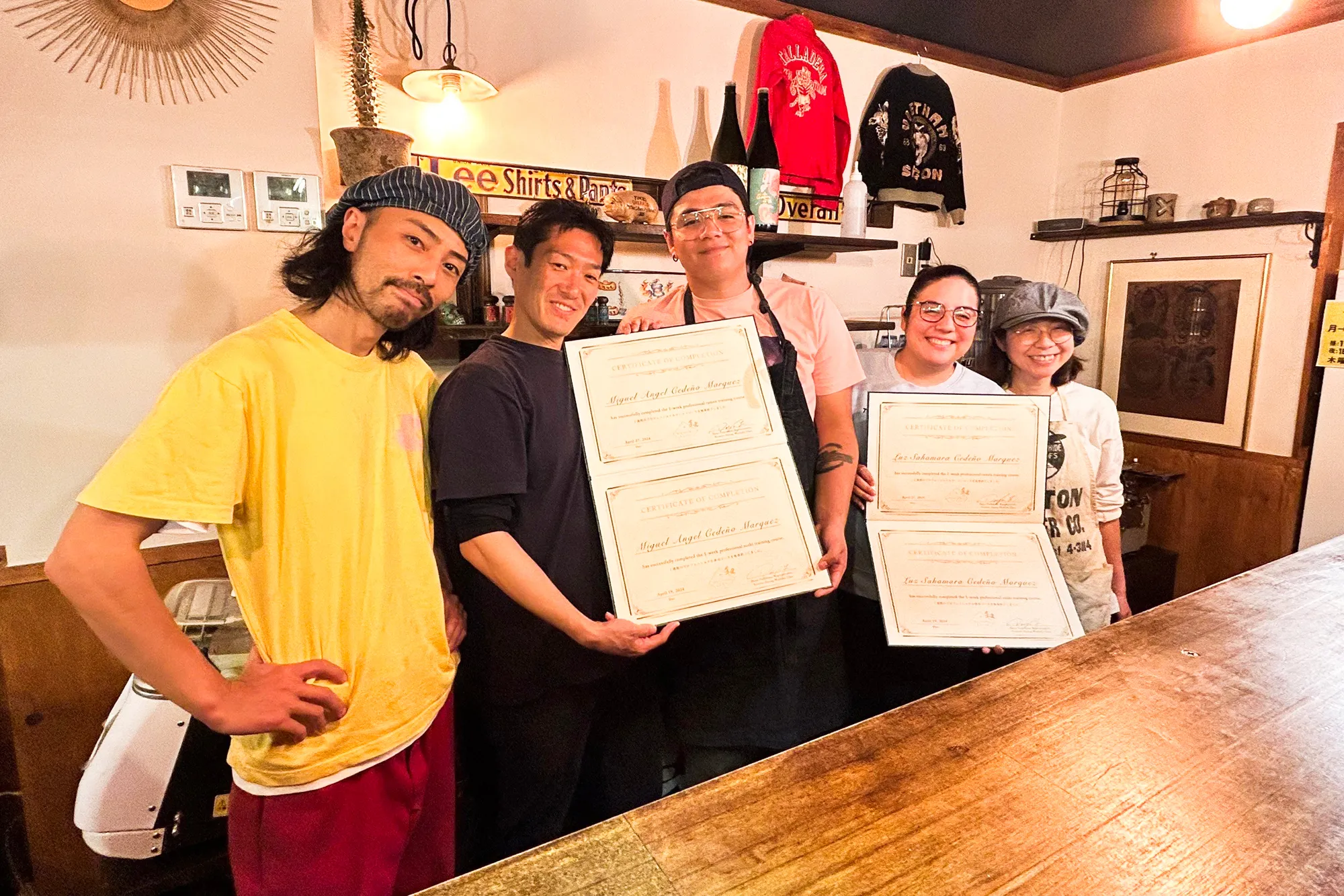

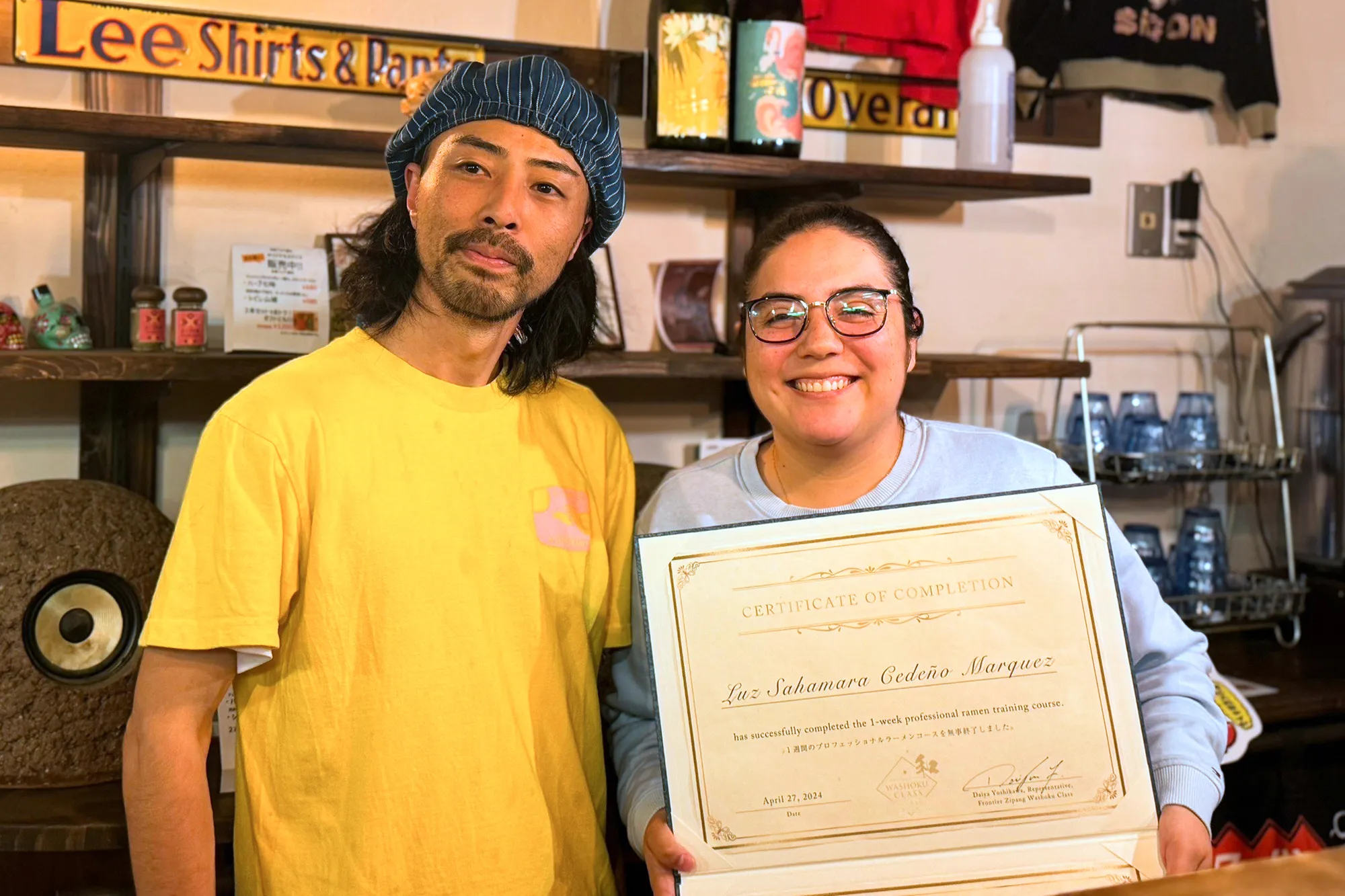
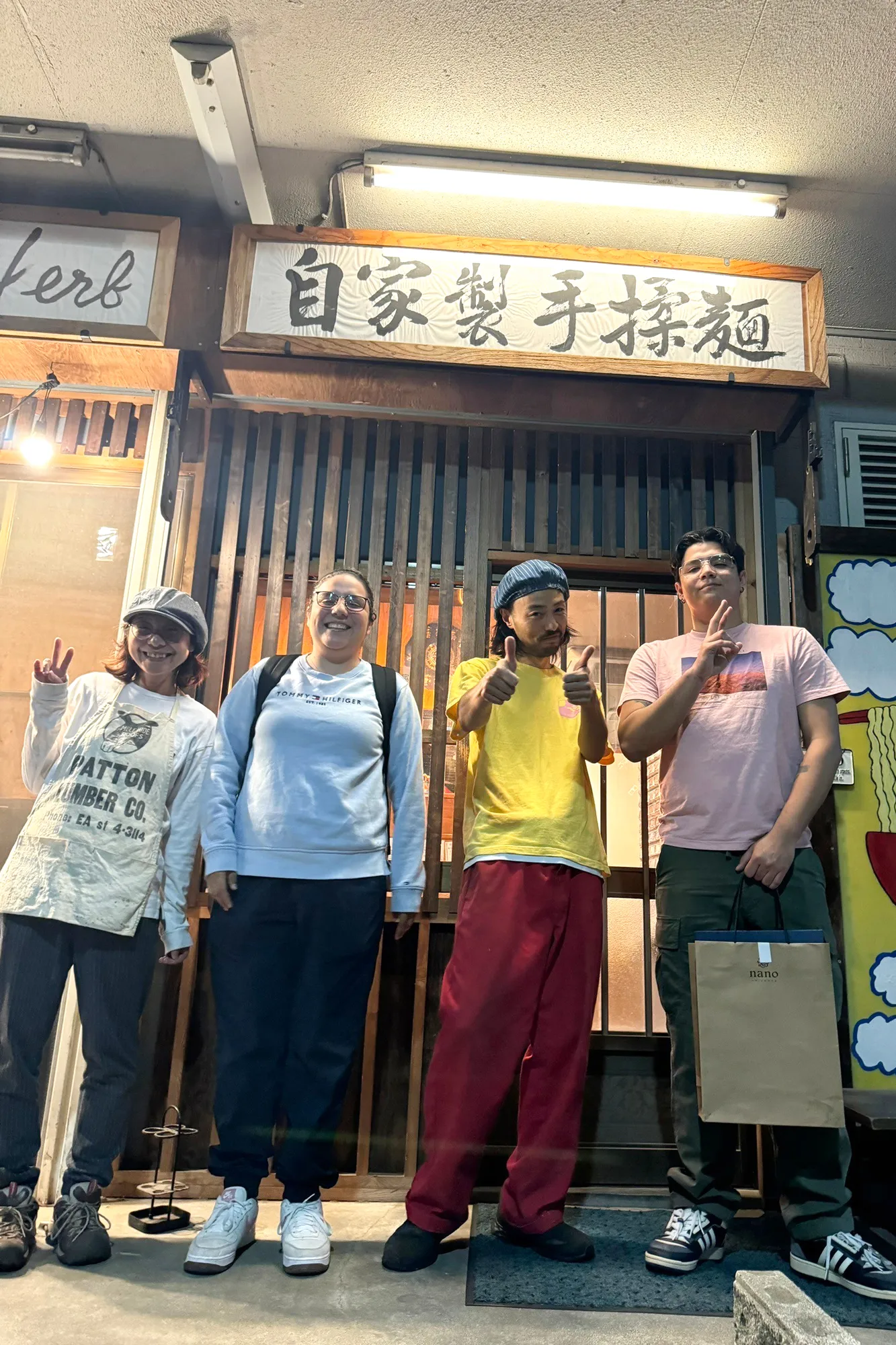
That concludes the 1-Week Ramen Course. Thanks to the instructor’s concise, step-by-step explanations about the entire process of ramen making, Sam and Miguel now realize that they will be able to expand the variations of ramen using the same soup broth, depending on their originality and ingenuity. We hope that they will come up with their own original ramen based on the knowledge and skills they have learned in this course, along with ingredients sourced from their home country.
